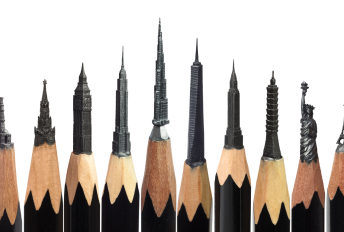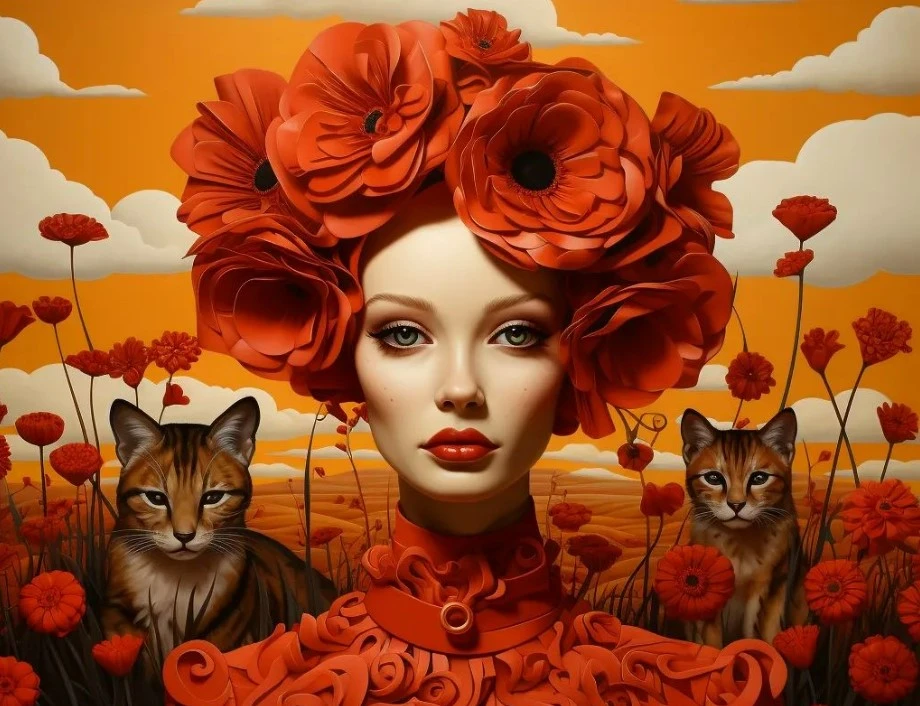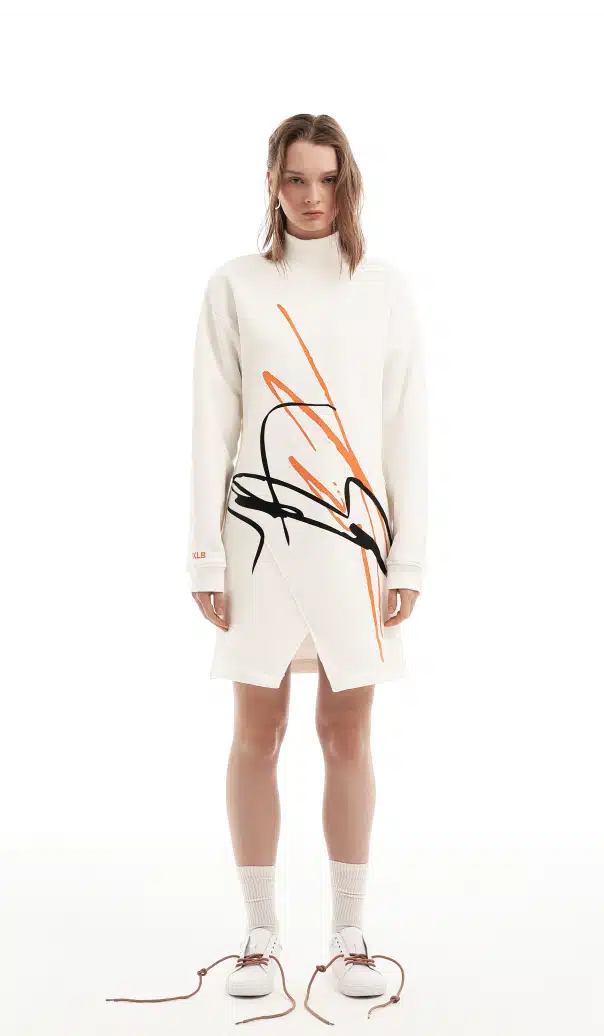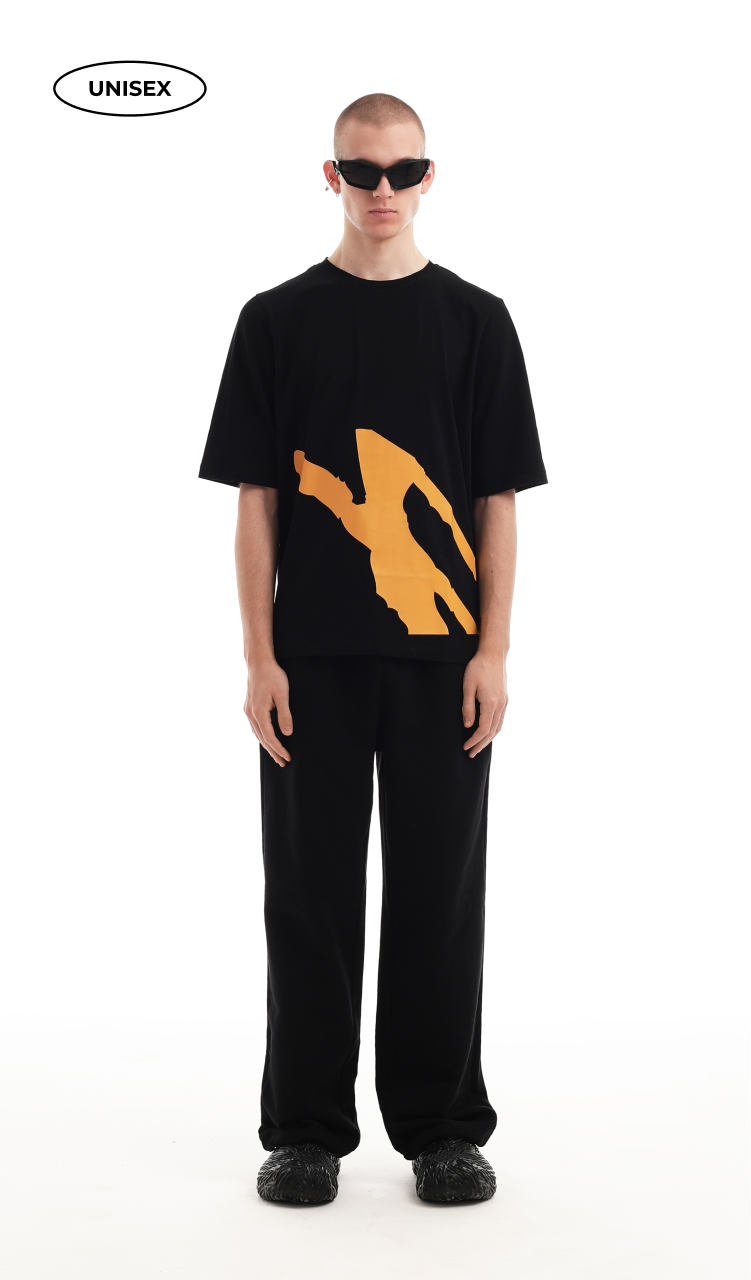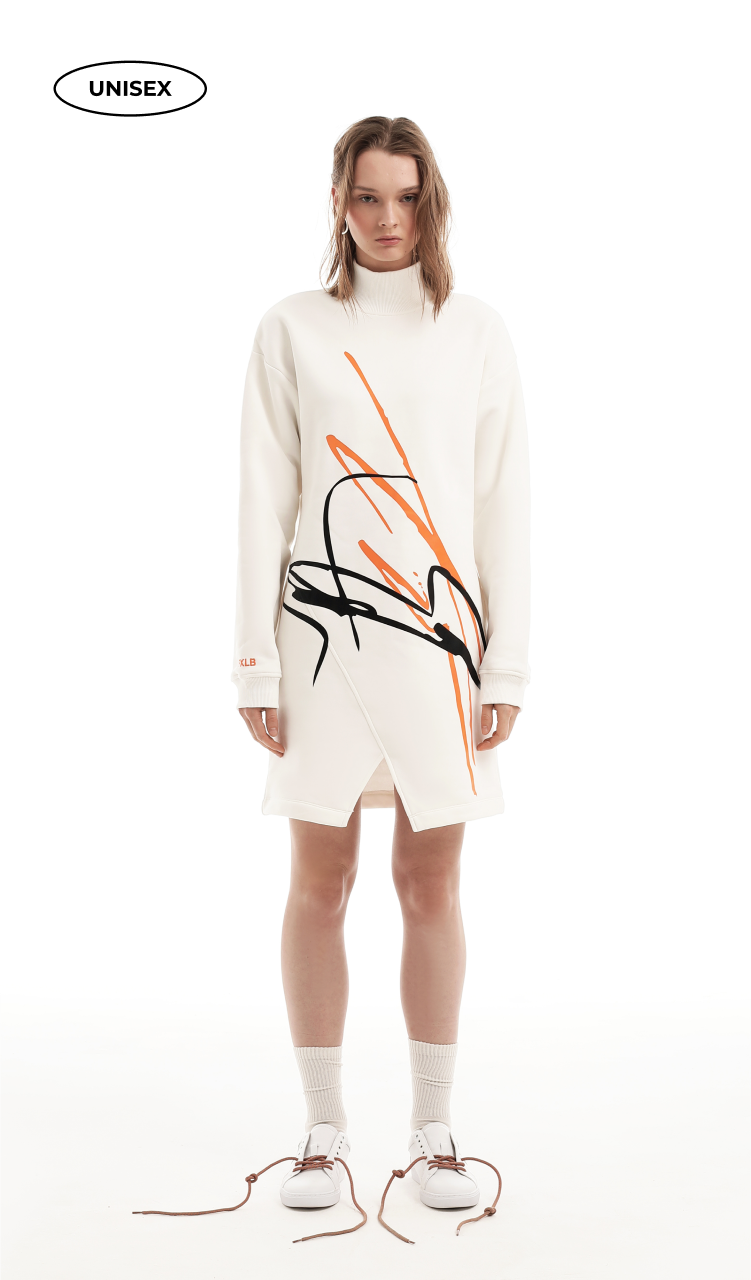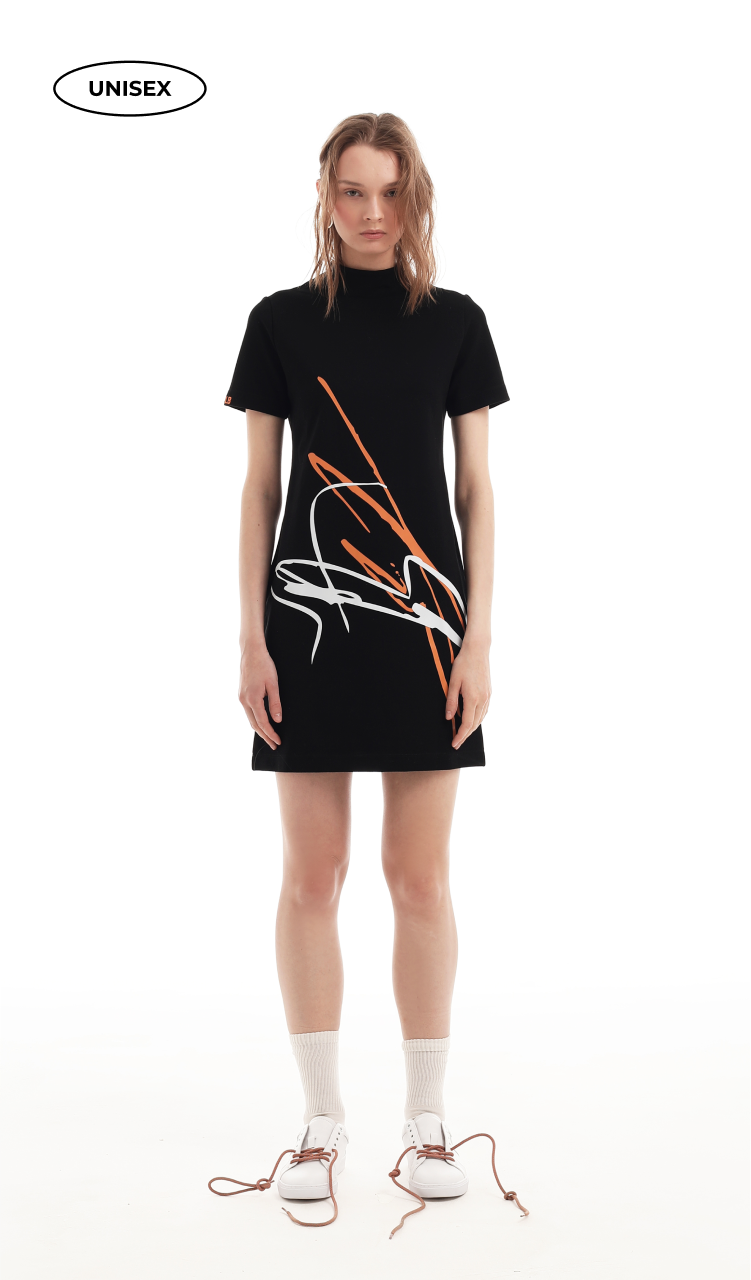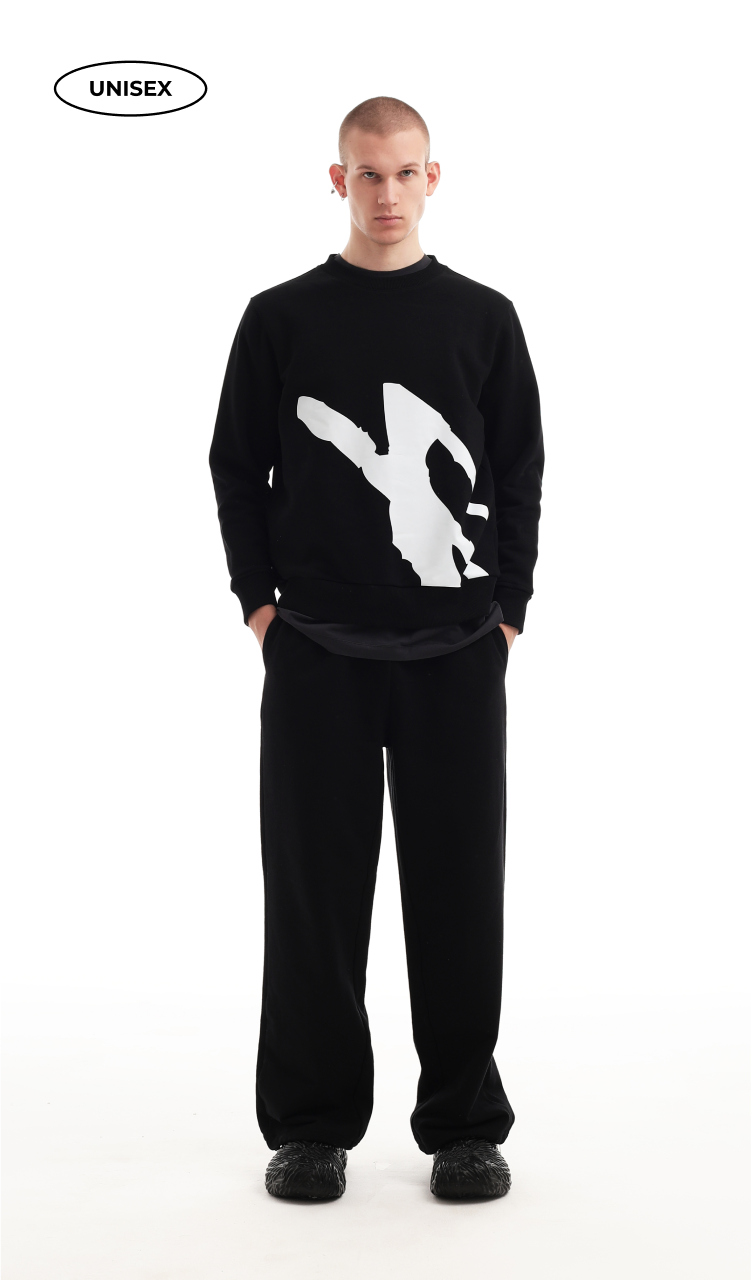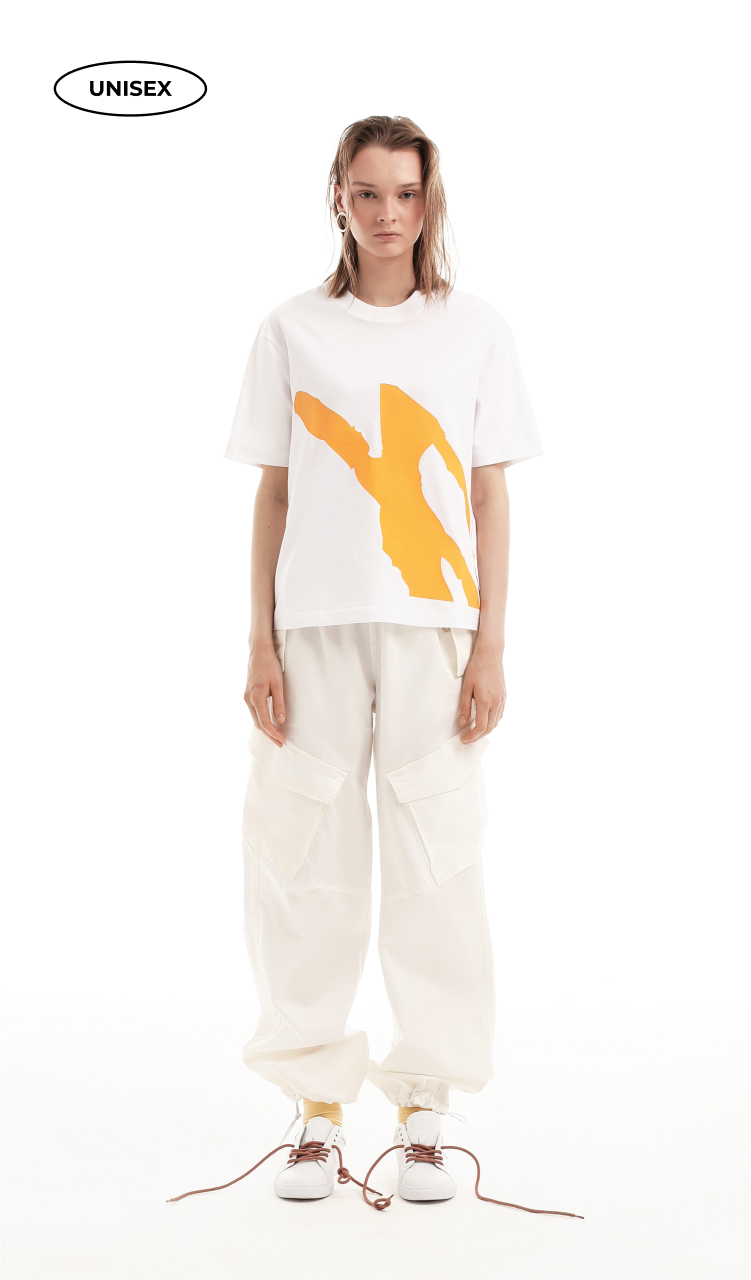Blog
1997 Fashion Big Bang, exposition in Paris
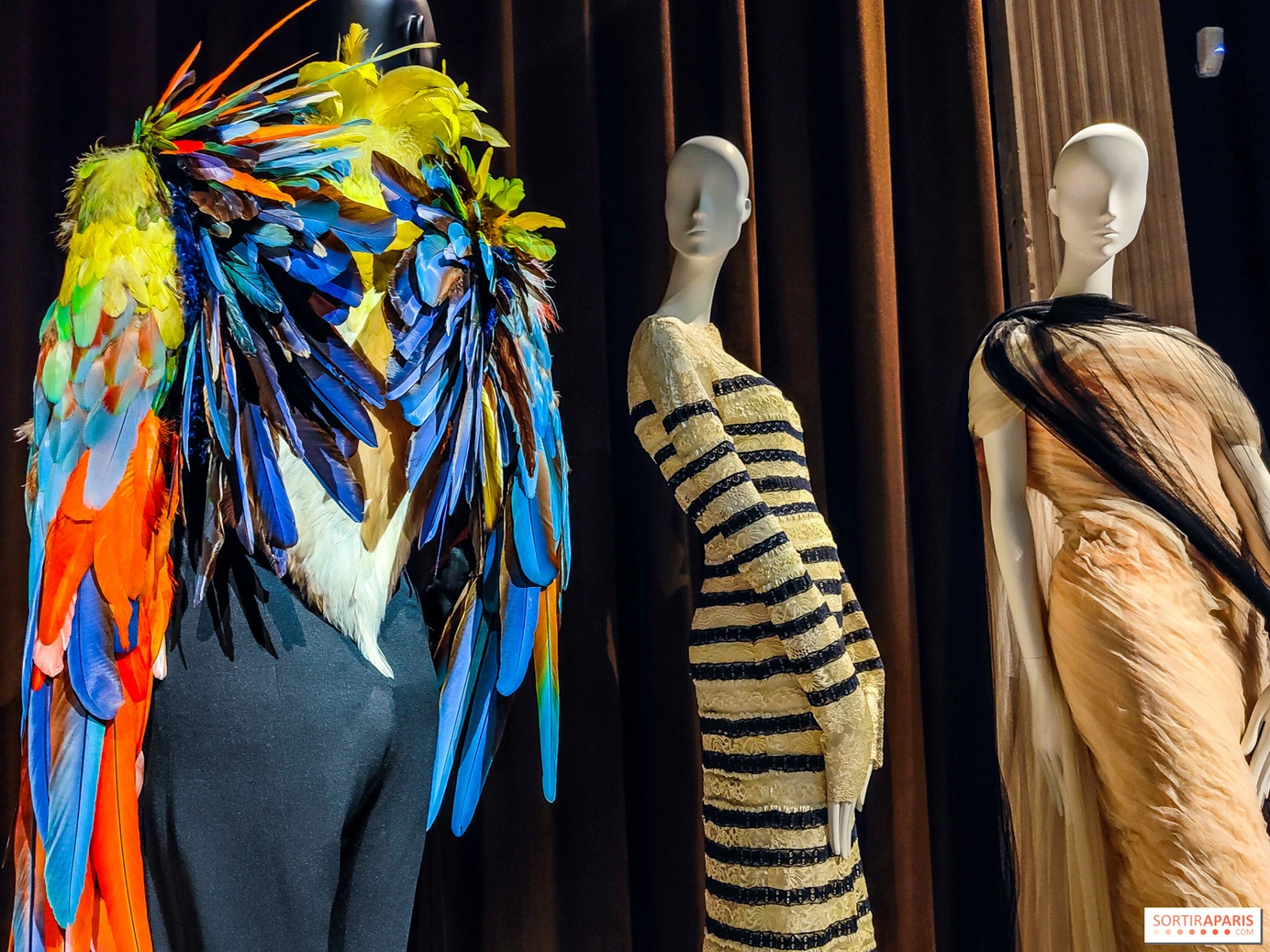
SHARE THE ARTICLE
The exhibition entitled *’1997 Fashion Big Bang’* opened earlier in March in Palais Galliera, Fashion Museum in Paris brings the visitors back to those times. Times when everything was possible and the craziest ideas were not limited yet by the brands’ financial records.
The fashion year 1997 started in fact in 1996, with the spring-summer ready-to-wear week, when the designers offered visions that were as radical as they were complementary.
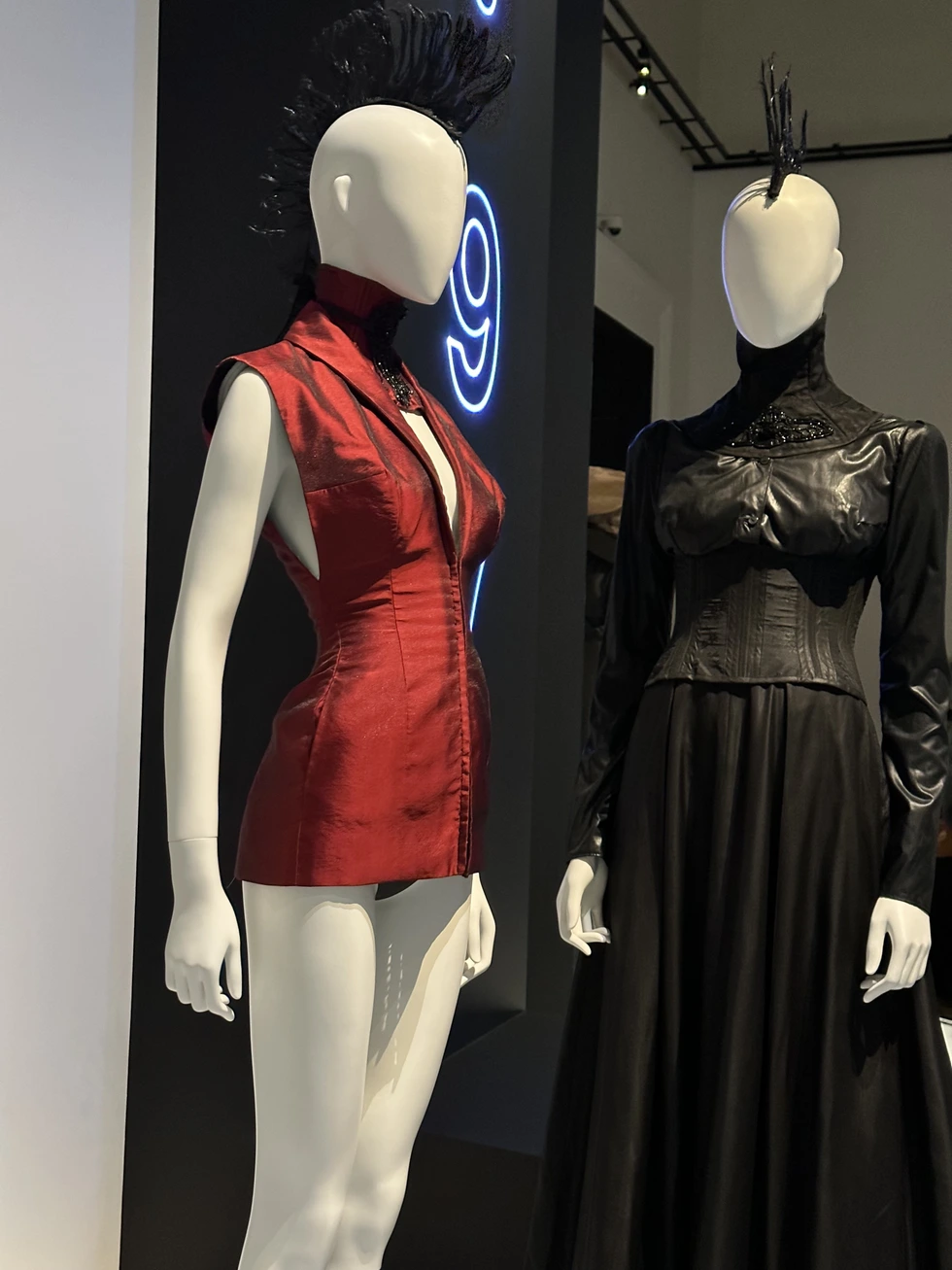
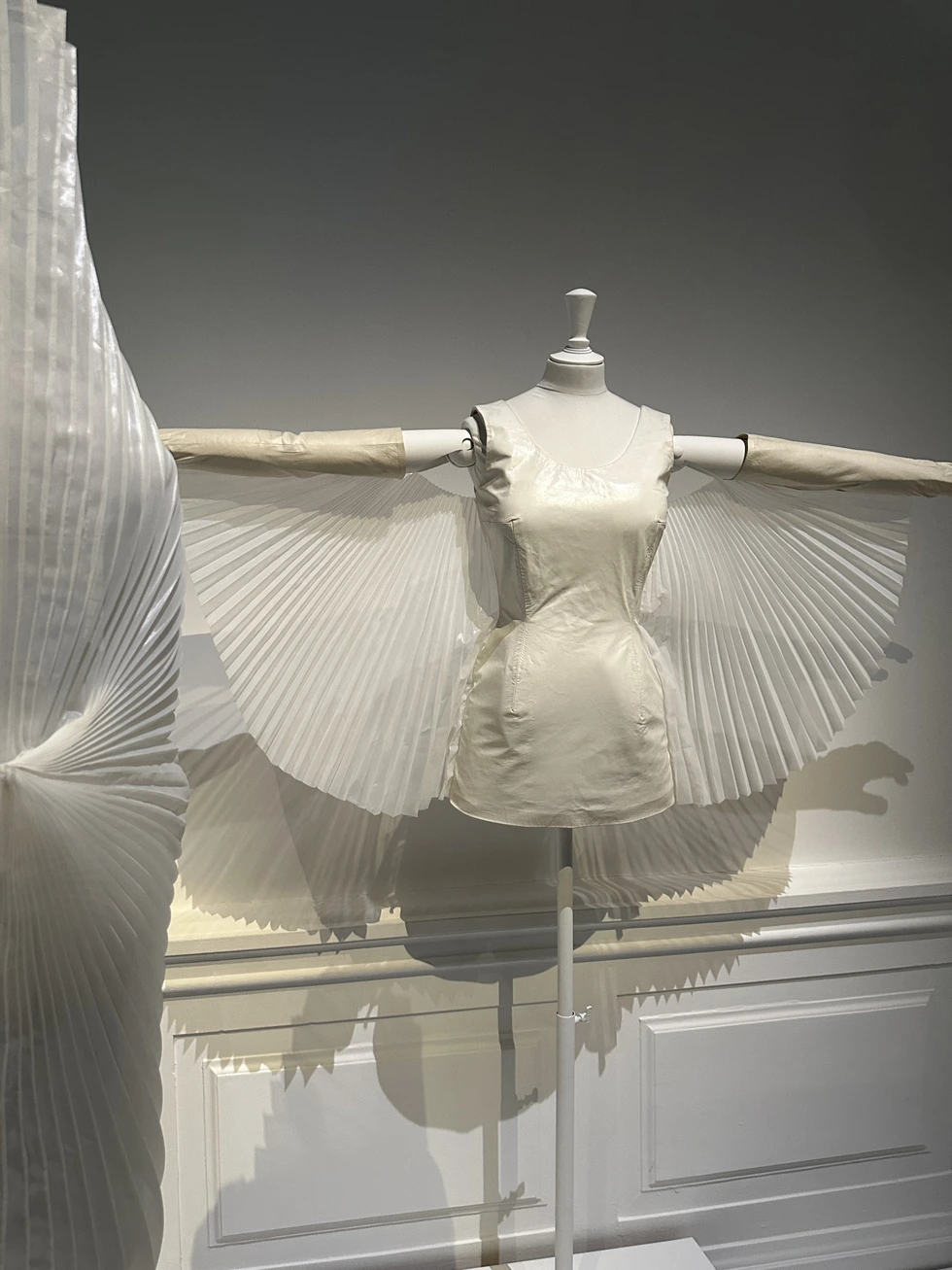

Tom Ford was appointed artistic director of Gucci in 1994. Soon after, he turned upside down this Italian house. The American designer inspired by the sensual 1970s aesthetic played with the exhibitionism and fetishism of his clients and voyeurism of the viewer. This inventor of “porno chic”, style which defined the image of Gucci up until the early 2000s contributed to popularising a type of underwear which went from being hidden to being worn with pride by women over the next decade.


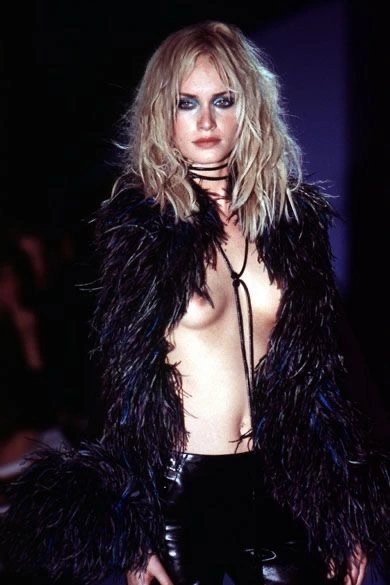
Ann Demeulemeester is known for her perfectionism. This Belgian designer showed her fist collection in 1987. But it’s her admiration of the American singer and fashion icon Patti Smith (who became her close friend further on) which resulted in a collection ready-to-wear fall-winter 1997 presented during the summer of 1996 that allowed this member of the famous Antwerp Six to gain international recognition.
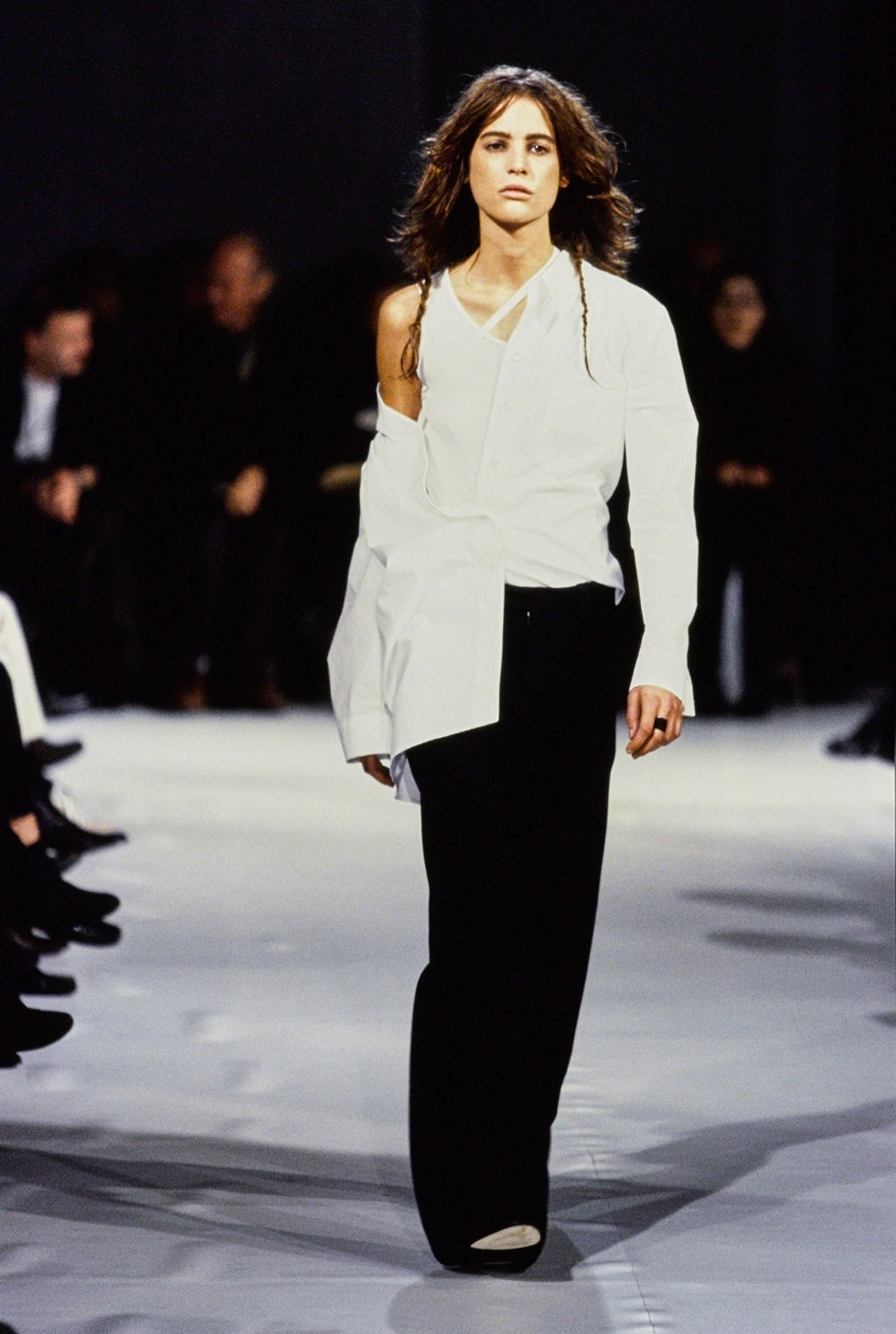
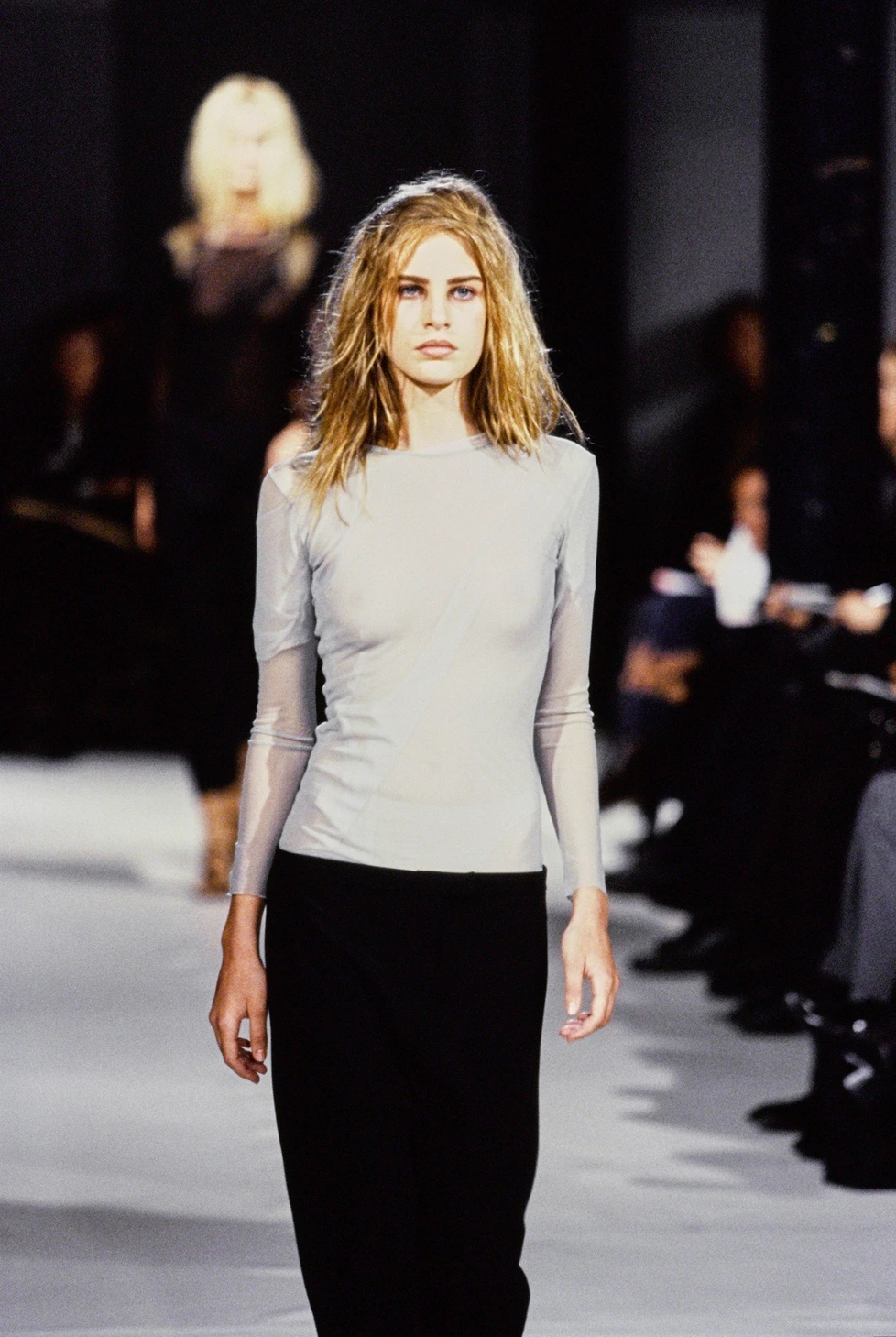

Repurposing of clothing is the signature of Martin Margiela. Since his debut this fashion disrupter revisited the classics and the foundations of the draping technique.
In his spring-summer collection Margiela went even further: he created garments based on a bust of a “Stockman” mannequin worn as a waistcoat and on which the different stages of its design were apparent. What is used to be hidden were revealed! The idea was so brilliant that the Belgian designer continued to explore it for his fall-winter season, featuring raw leaning and paper worn like real cloths.
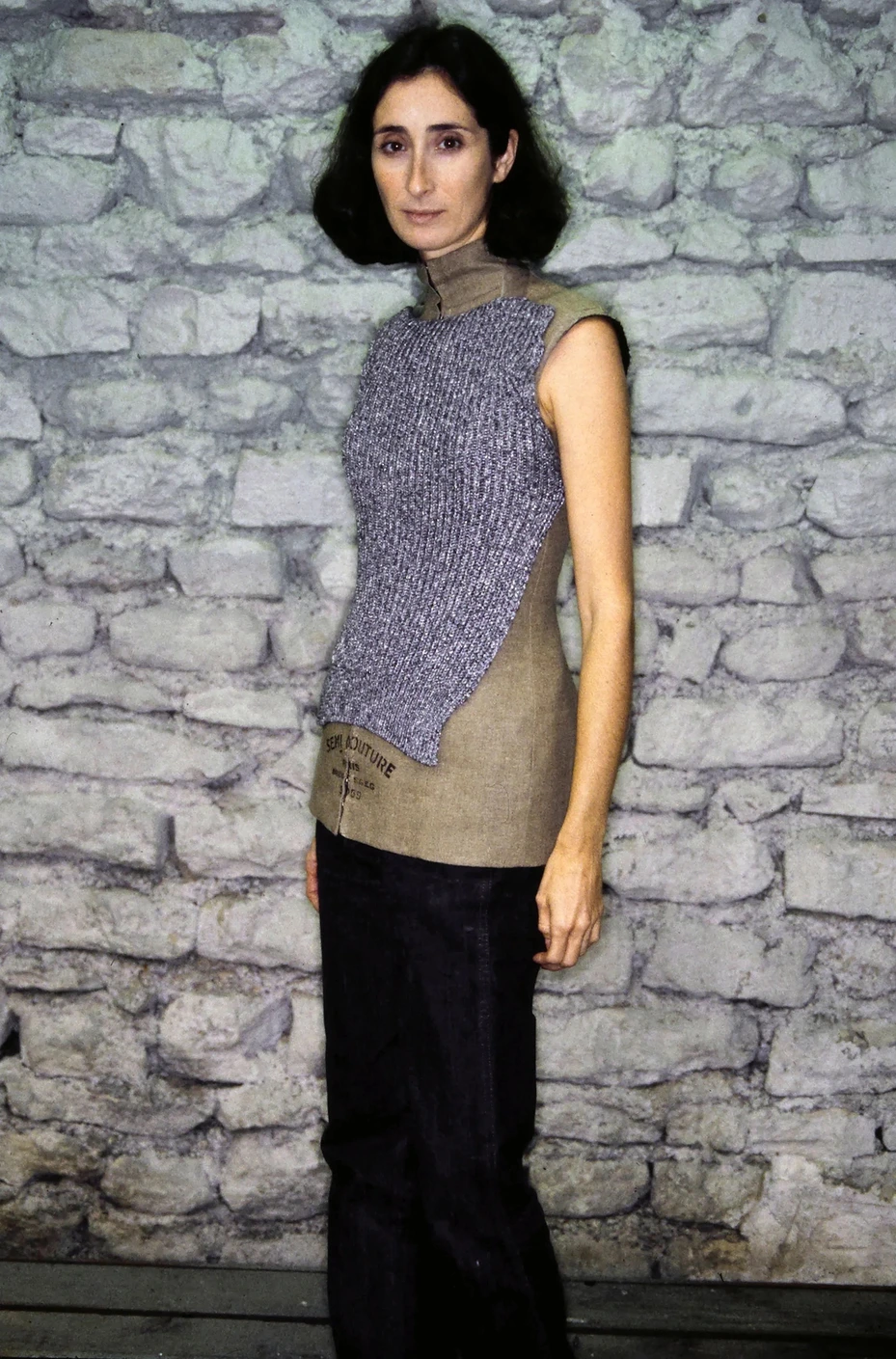


It was back in 1997 when the first garments collection was made by the legendary leather goods producer Louis Vuitton. Founded in 1854, famous for its suitcases, this French house appointed the young American designer Marc Jacobs as an artistic director for this new activity. Marc created a ‘black page’ clothing collection in white and minimalist pale grey. He surprised the public by proposing only one bag which, like the cloths, appeared without the famous monogram.
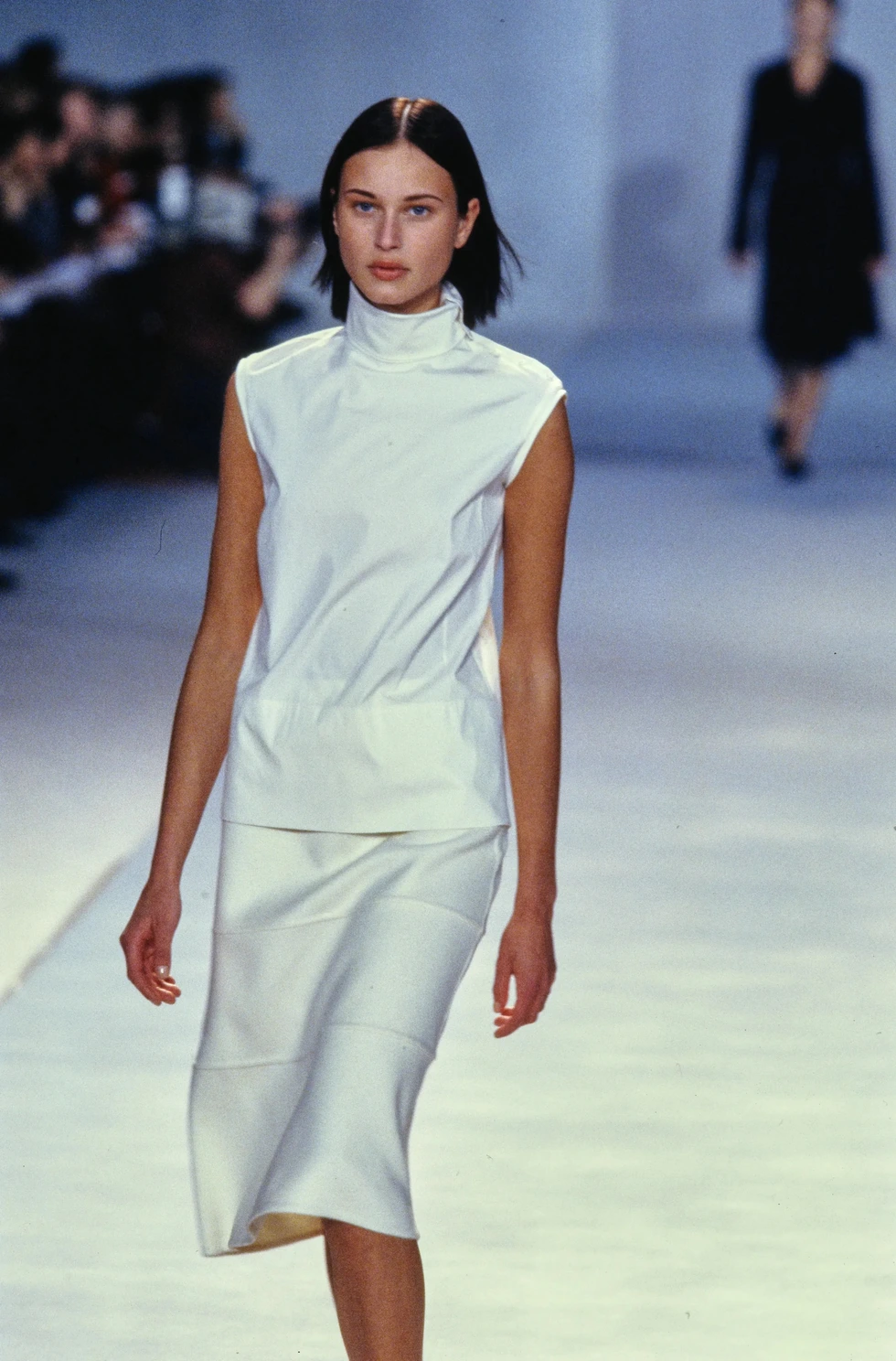

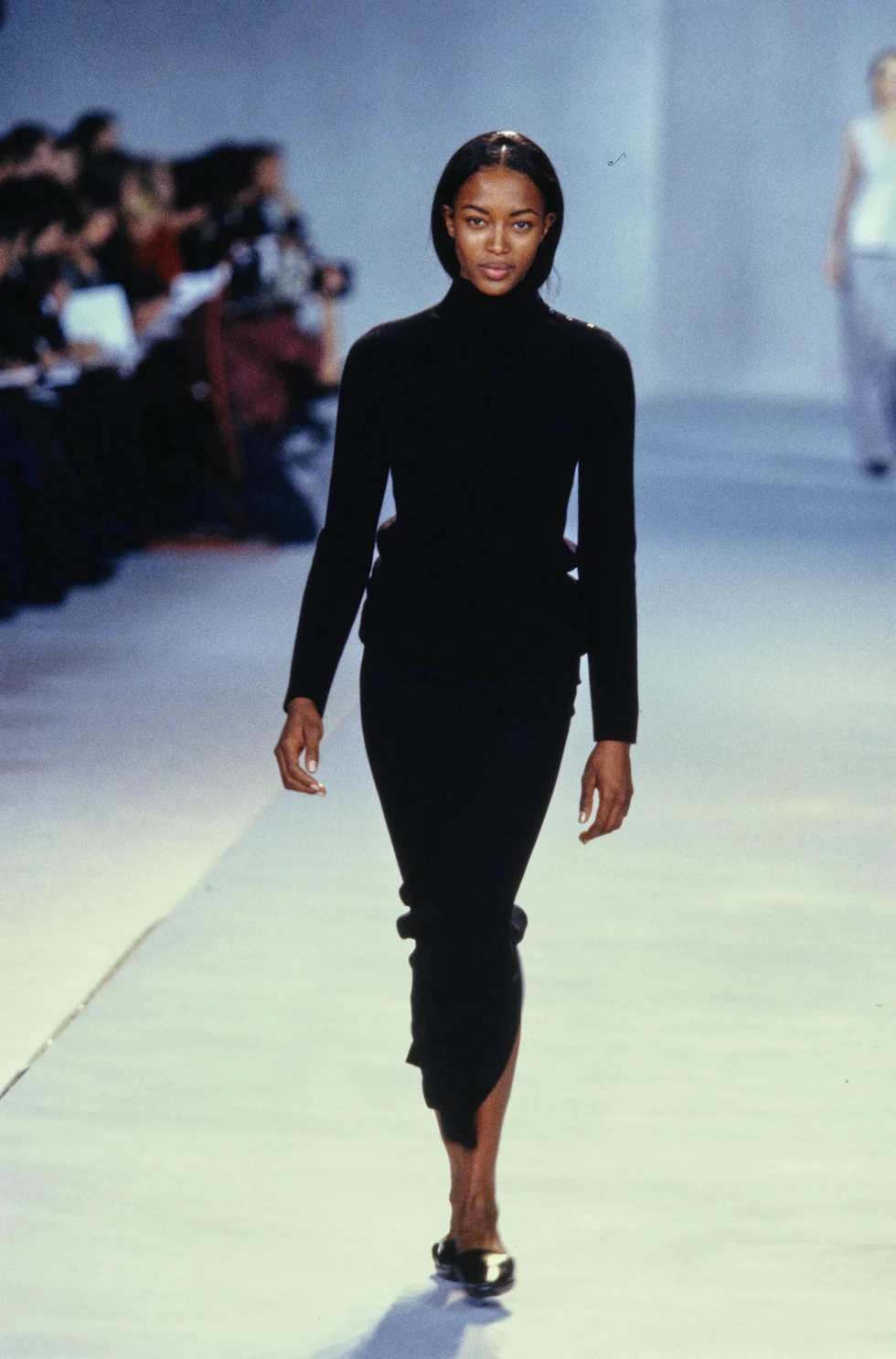
France is famous for its apparent conservatism and criticism of all newness. Therefore, these were no concept stores in Paris till…yes, our year of glory, 1997! When Colette Roussaux and her daughter Sarah opened “Colette” at N 213 rue Saint Honoré.
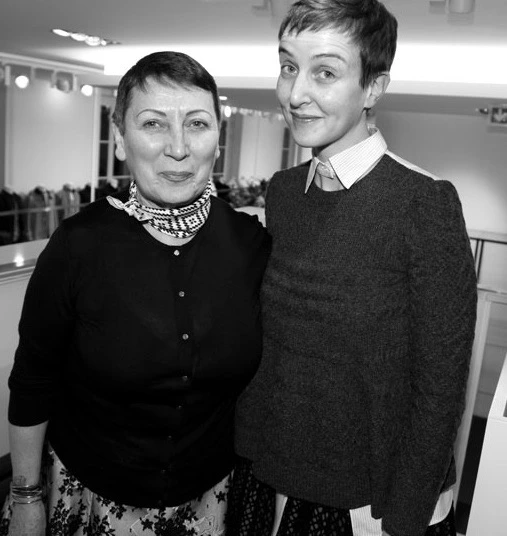
With their slogan ‘StyleDesignArtFood’, they brought together a boutique, bookstore, restaurant, art gallery, etc., creating a brand new concept of luxury goods consumption within the same space. They freely mixed recognised brands and emerging names from all over the world. In twenty years Colette became the must-see fashion stop of the capital. When it finally closed in December 2017, marking the end of an era.




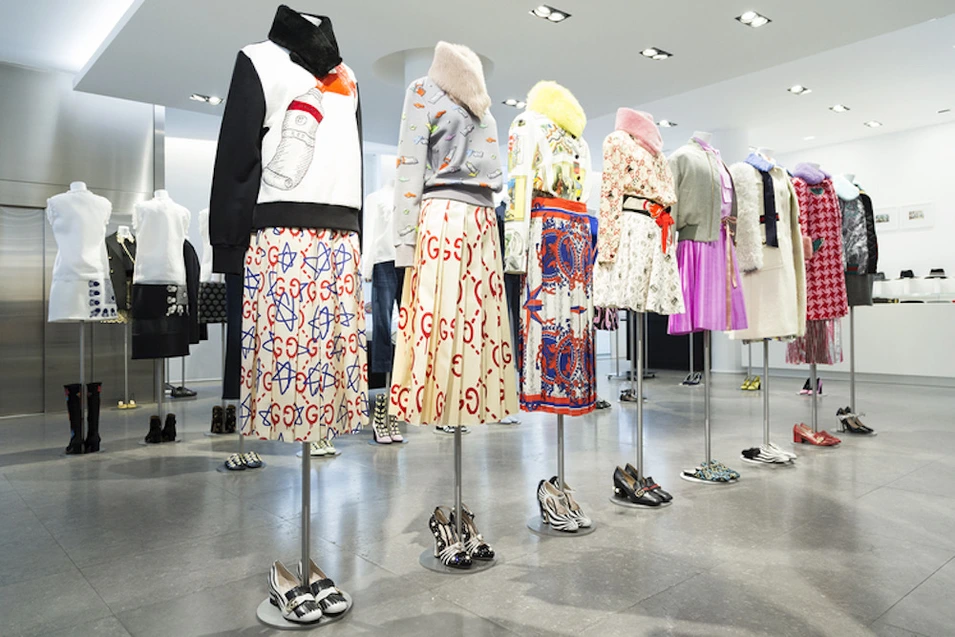

The “Baguette” bag conceived by Silvia Venturing Fendi owes its name to its shape and the way it is carried, like a baguette placed under the arm. Presented during Fendi’s 1997-1998 fall-winter show, its now considered as one of the first it-bags in the fashion history. Models of the bag are regularly revisited as demand explodes. The pilot episode of Sex and the City, filmed in June 1997 in New York where “Baguette” appeared added to its international success.
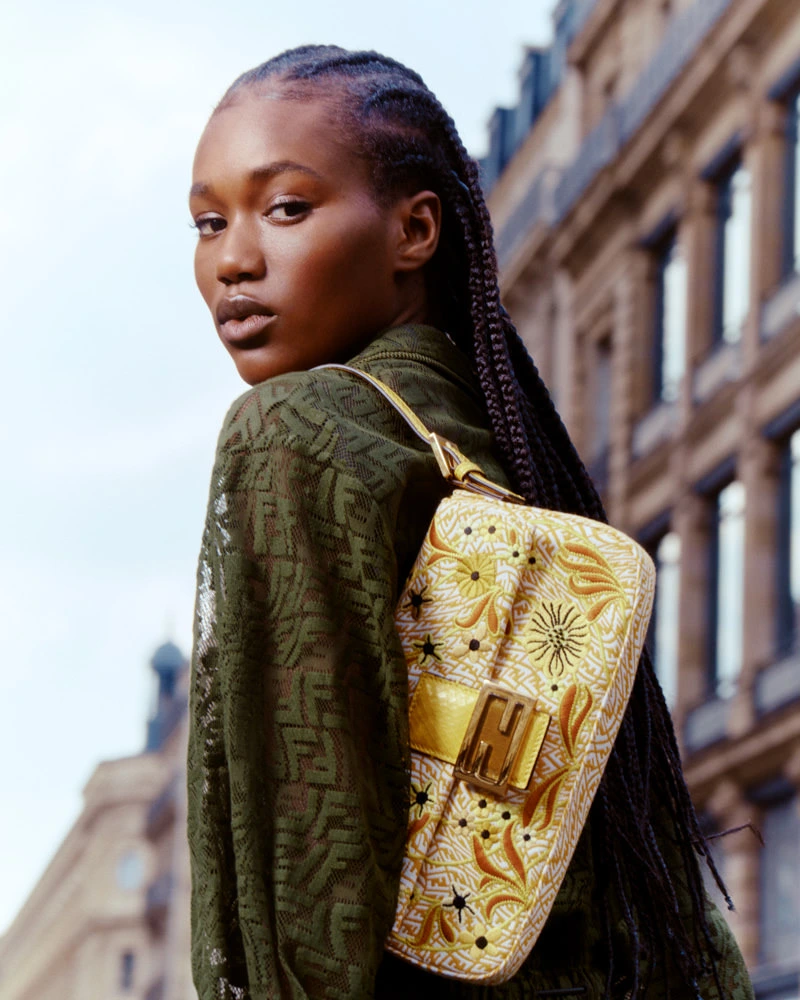
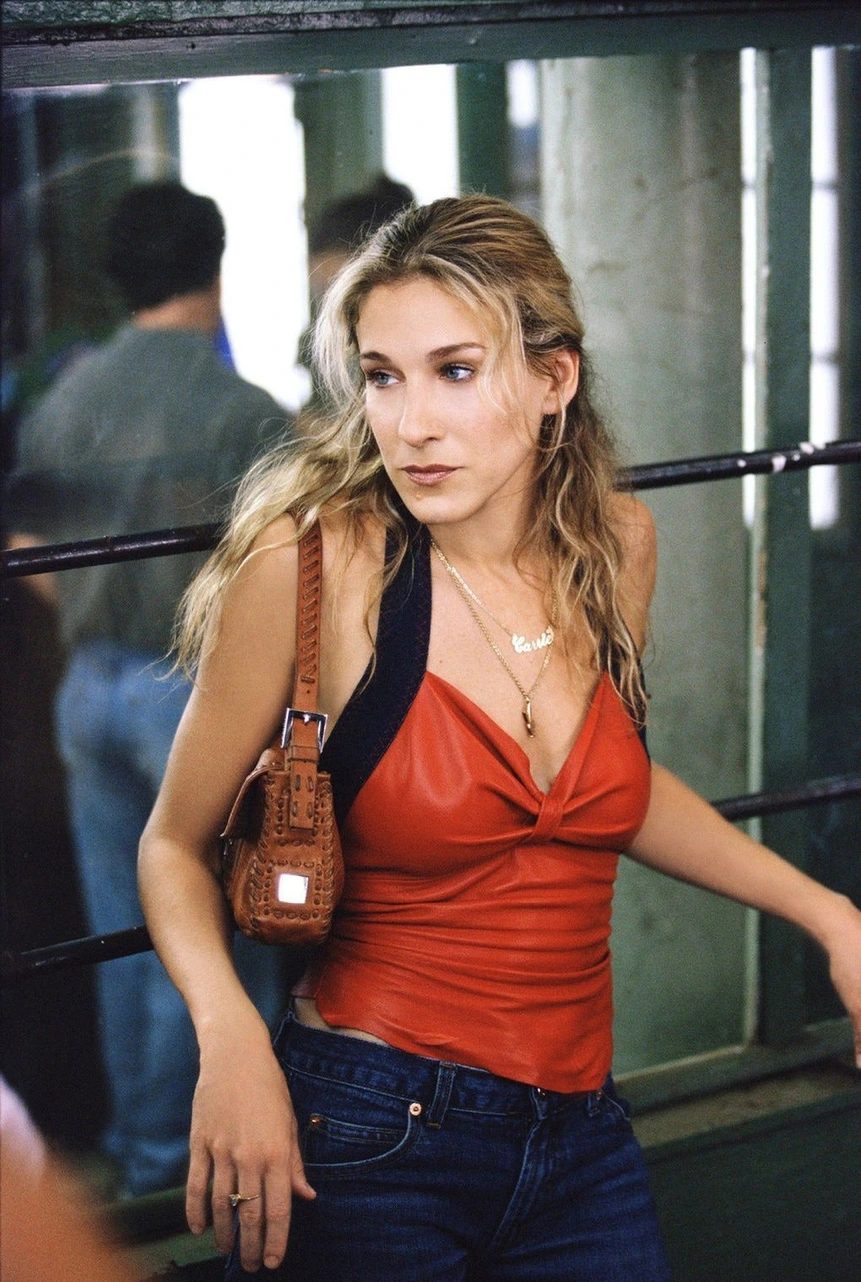
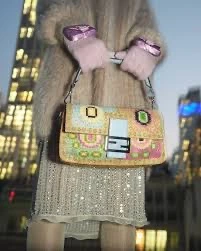

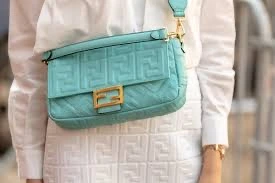
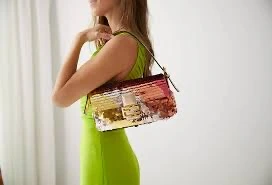
1997 saw the emergence of Alber Elbaz. The house of Guy Laroche invited this then unknown Israeli-American designer to refresh its look. The success was so impressive that only one year later Elbaz was invited to head Yves Saint Laurent and Yves Saint Laurent Rive Gauche before his triumph as an artistic director of Lanvin from 2001 to 2015.


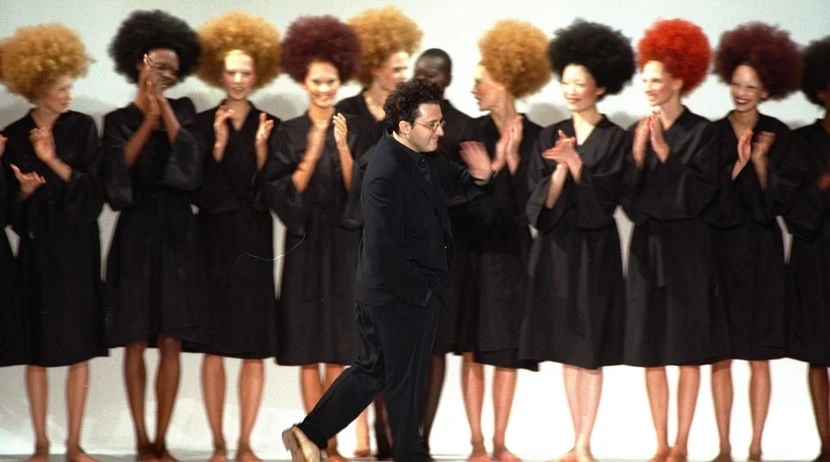
The season was galvanised by the presentations of the January haute couture collections. Those shows announced the revival of the high fashion which considered at the edge of death.
At the top of his glory, Gianni Versace kicked off haute-couture week with a bang. Previously the Italian designer appeared in the catalogues of two exhibitions: “Japanese and Fashion” at the Palais Galliera (1996) in Paris and “The Glory of Byzantium” at the Metropolitan Museum of Art in New York (1997). Nine days after the show, Versace was killed outside his Miami villa by Andrew Cunanan. The shock was worldwide: all brand’s boutiques closed their doors and numerous fashion events were cancelled. It was his sister, Donatella Versace who took over the house and debuted her first collection in Milan just few months after Gianni’s death, announcing the beginning of a “new era”.



Known for his sumptuous Baroque style, Christian Lacroix is considered as a the precursor of the opulent movement that resurfaced in 1997 after several years of minimalism. Celebrating the tenth anniversary of his fashion house, the couturier from Arles showed a collection inspired by the Neapolitan nativity figures and evoked the silhouettes of the late 19th century.

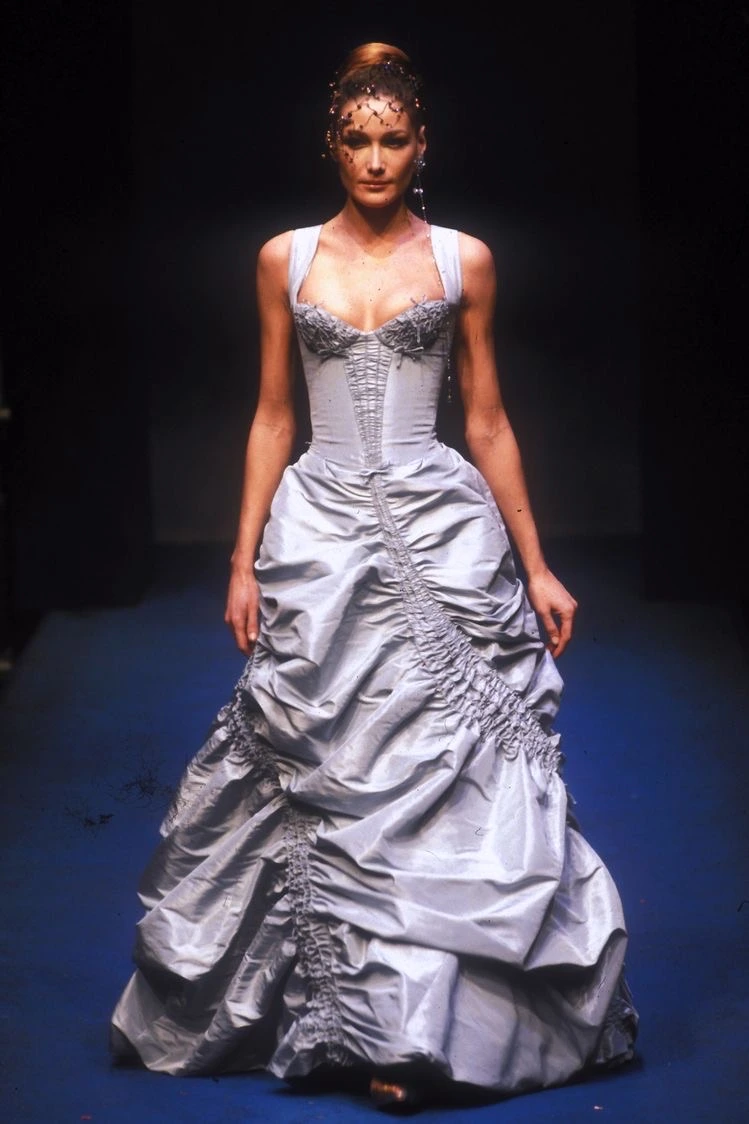

The first collection of Alexander McQueen presented for Huber de Givenchy couture house was severely criticised by the journalists. This 27-year old eccentric British fashion prodigy got his inspiration from the classical Greek myths as the brand’ logo – a square formed by four facing Gs – reminded him of the motifs in ancient Greek friezes. Press accused the young designer of making costumes rather than cloths. McQueen, hurt but unbowed, emerged from this first experience with a taste for revenge.
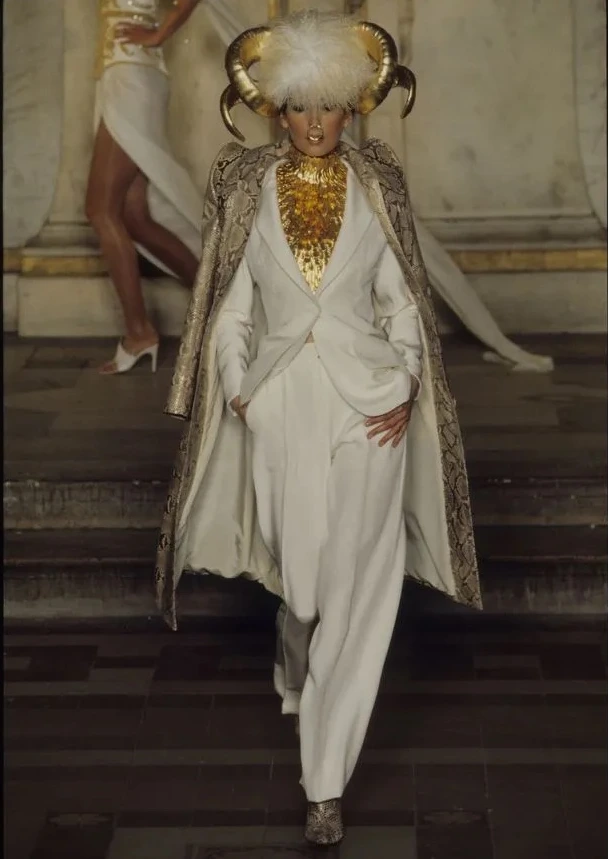
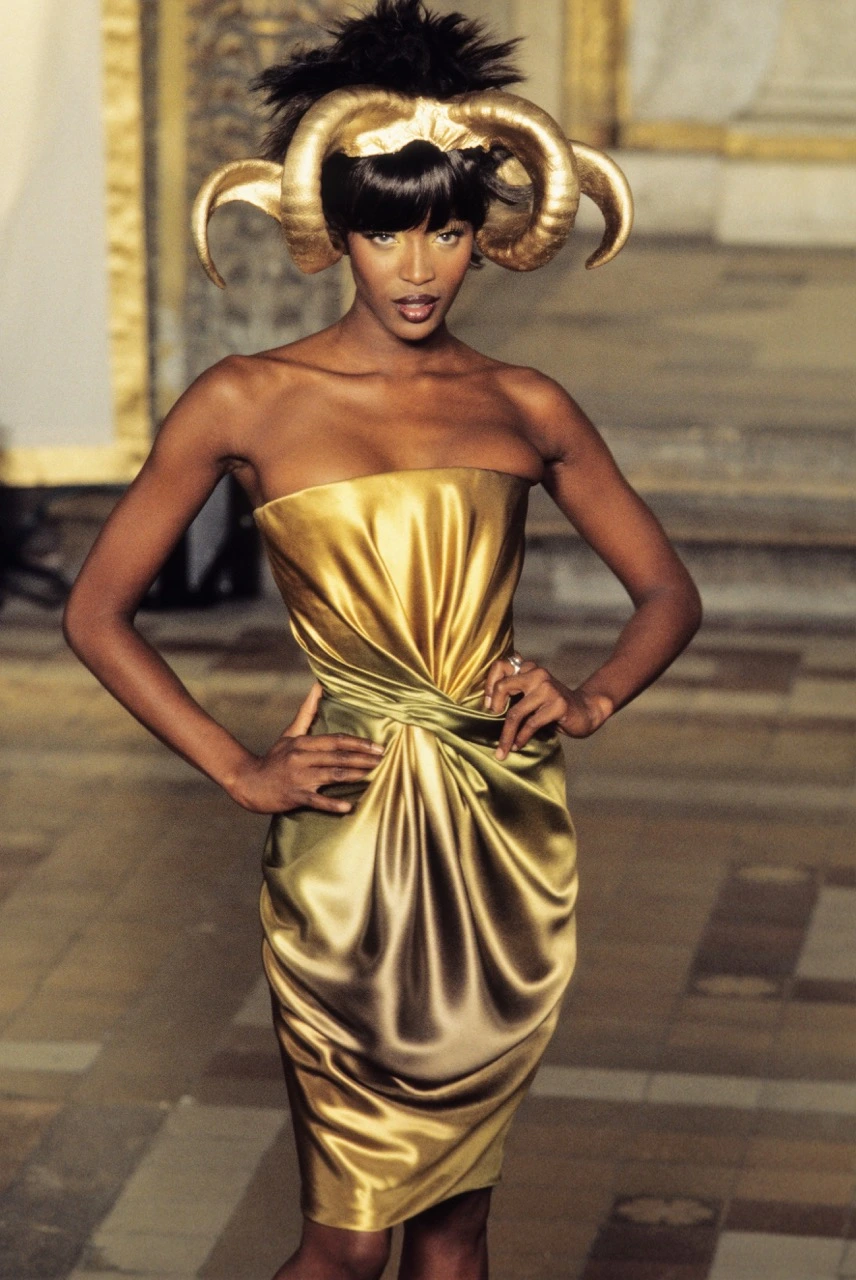

Learned from the bad reviews of this first collection, he presented a second more introspective haute-couture show. Grandiose, it revealed all the darkness and the intensity of his talent. It became a tribute to the craftsmen and seamstresses he admired. He now considered Givenchy as a laboratory where he could perfect his ideas and experiment for his own brand.
“I don’t want you to walk out feeling like you’re just had Sunday lunch. I want you to feel repulsed or exhilarated, as long as it’s an emotion. If you leave without emotion, then I’m not doing my job properly”, said Alexander McQueen in an interview in 1997.

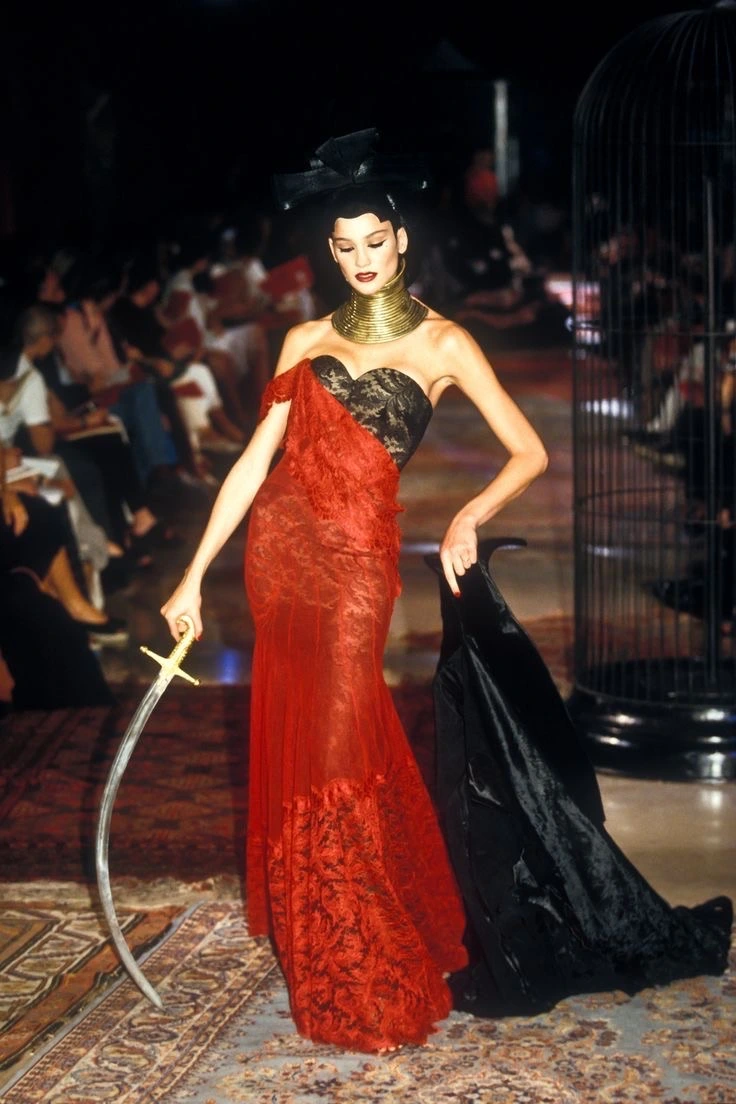


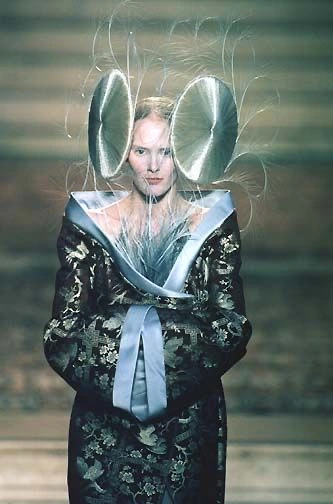
The same year, Bjork contacted McQueen and asked him to design the cover of her one of the most famous album, Homogenic. She wished to appear as a “warrior with love as her only weapon”. The creator came up with a dress inspired by the Japanese kimono, with a necklace similar to those worn by the South African tribals and a sculptured hairstyle reminded of the Native Americans. This cultural mix resonated with the “Eclect Dessert”, collection presented by McQueen for Givenchy two months earlier.
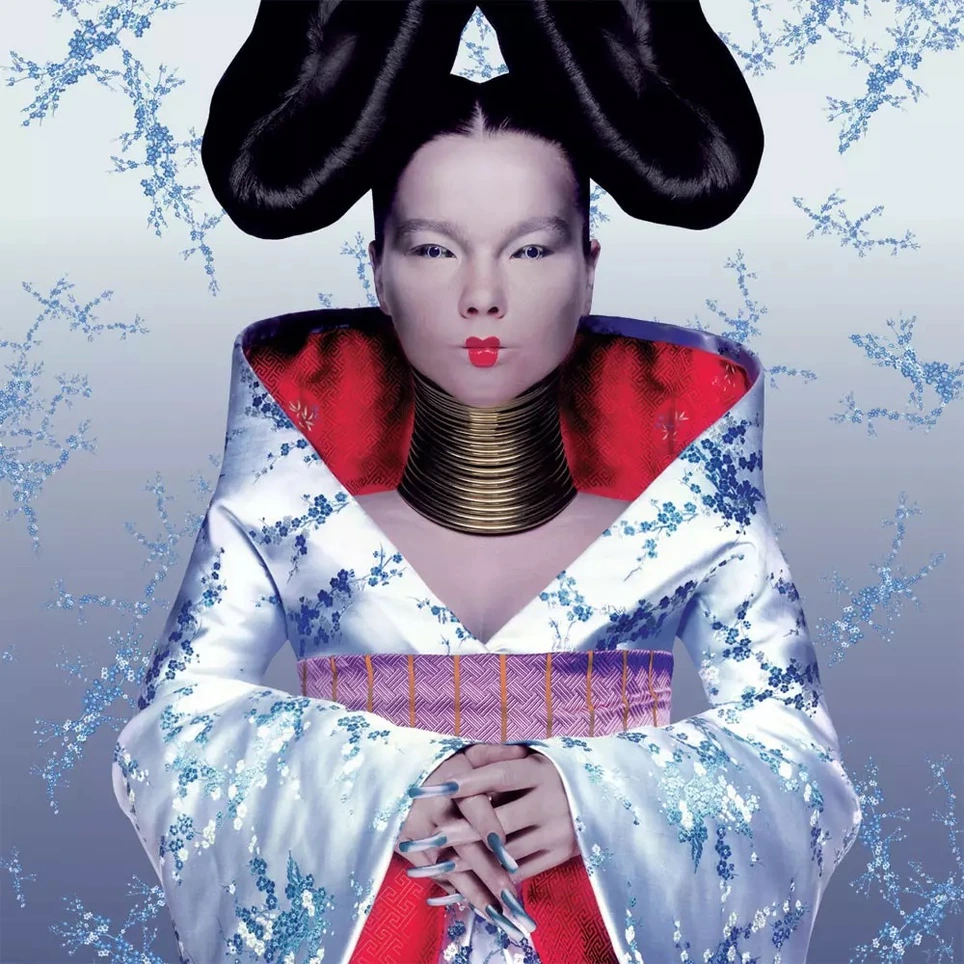
John Galliano’s first haute-couture collection was probably the most expected event of that extraordinary season. Appointed artistic director of Christian Dior in October 1996, Galliano had a big challenge in front of him – celebration of the 50th anniversary of the house. The challenge which the young English designer rose brilliantly: fifty outfits were presented on fifty models reflecting the diversity sought by Galliano. Faithful to his eclectic Baroque universe, he combined multiples references both ethnographic and historical into a runway show which was hailed by the press. With this collection marked a start of a fantastic 14-year career of John Galliano in Maison Christian Dior.
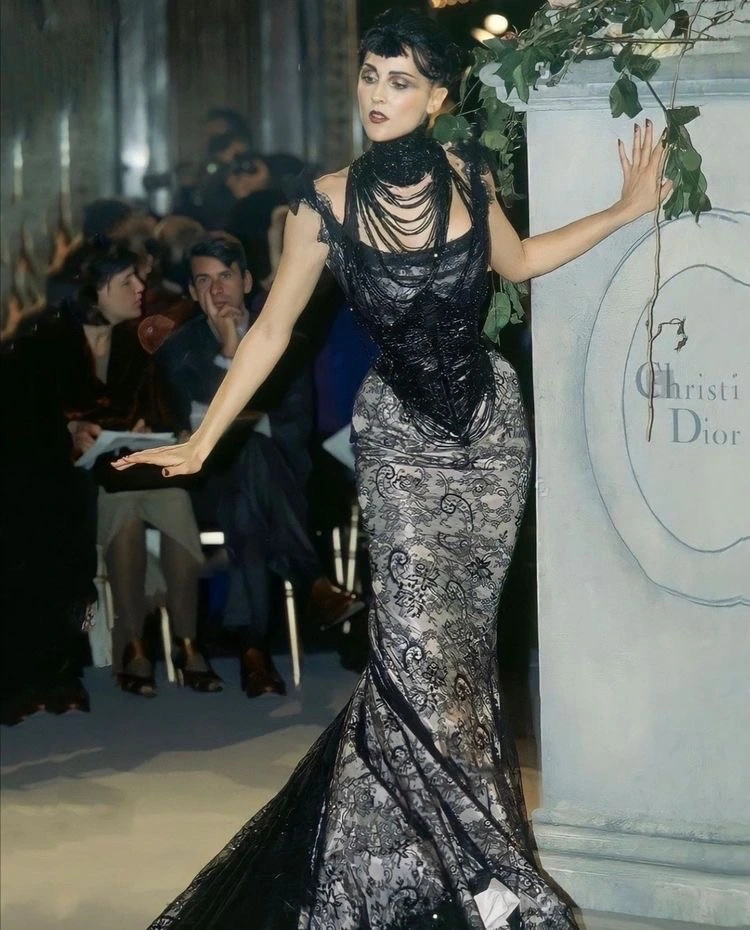

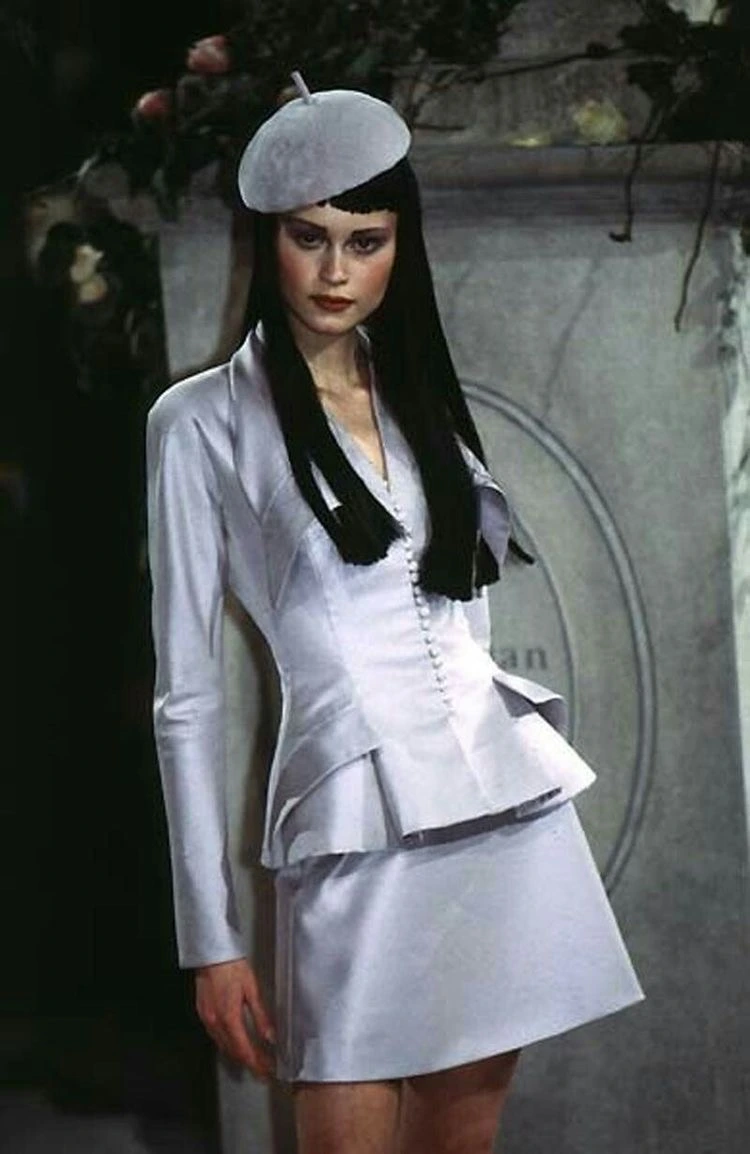
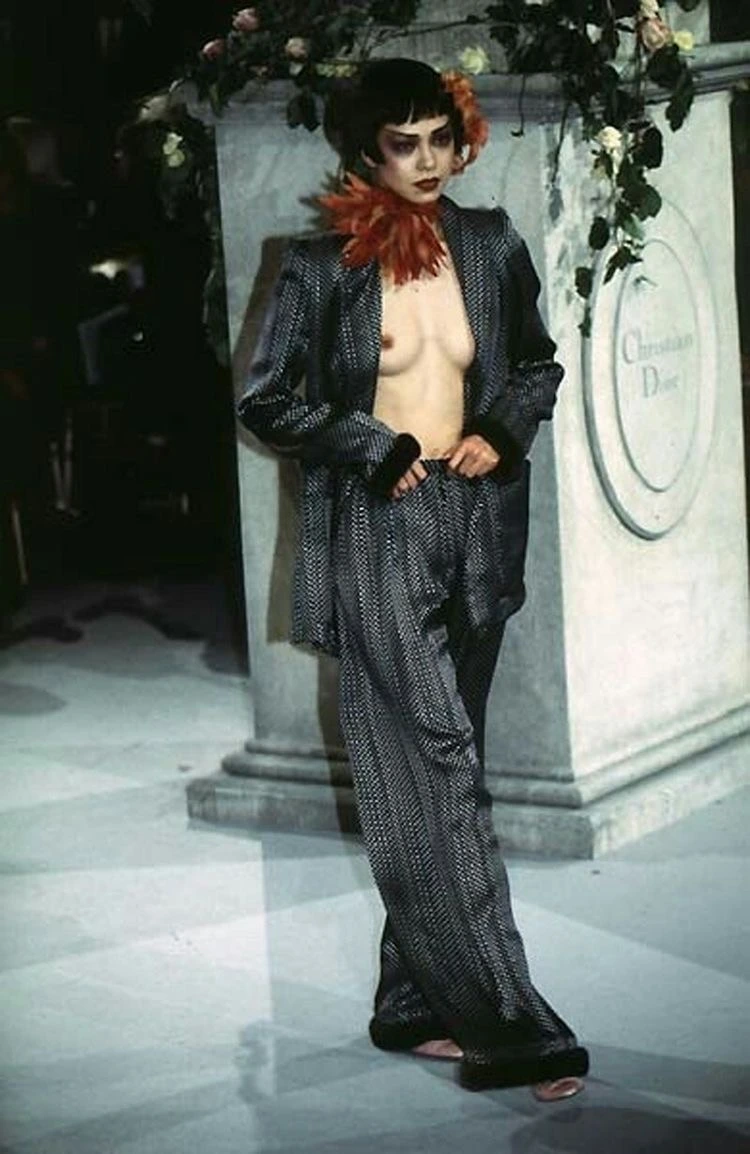

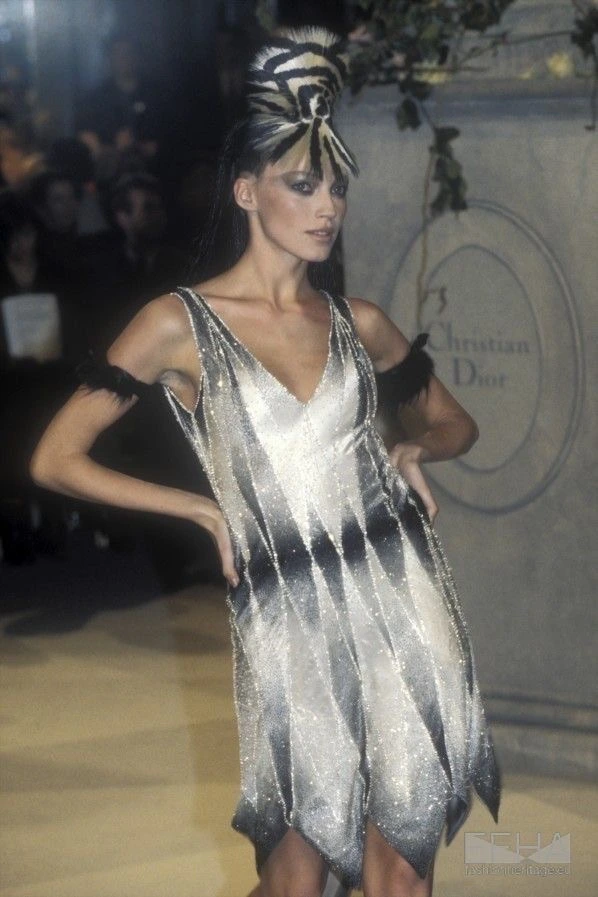
The runway show of Thierry Mugler spring-summer 1997 began with the humming of insect wings, thereby setting the tone for the most emblematic haute-couture collection of the designer’s career. “I have always been fascinated by insects, their carapace and futuristic-like graphics. They are at once fragile, light and shielded by a protective covering, just like the woman a dress”, explained Mugler.
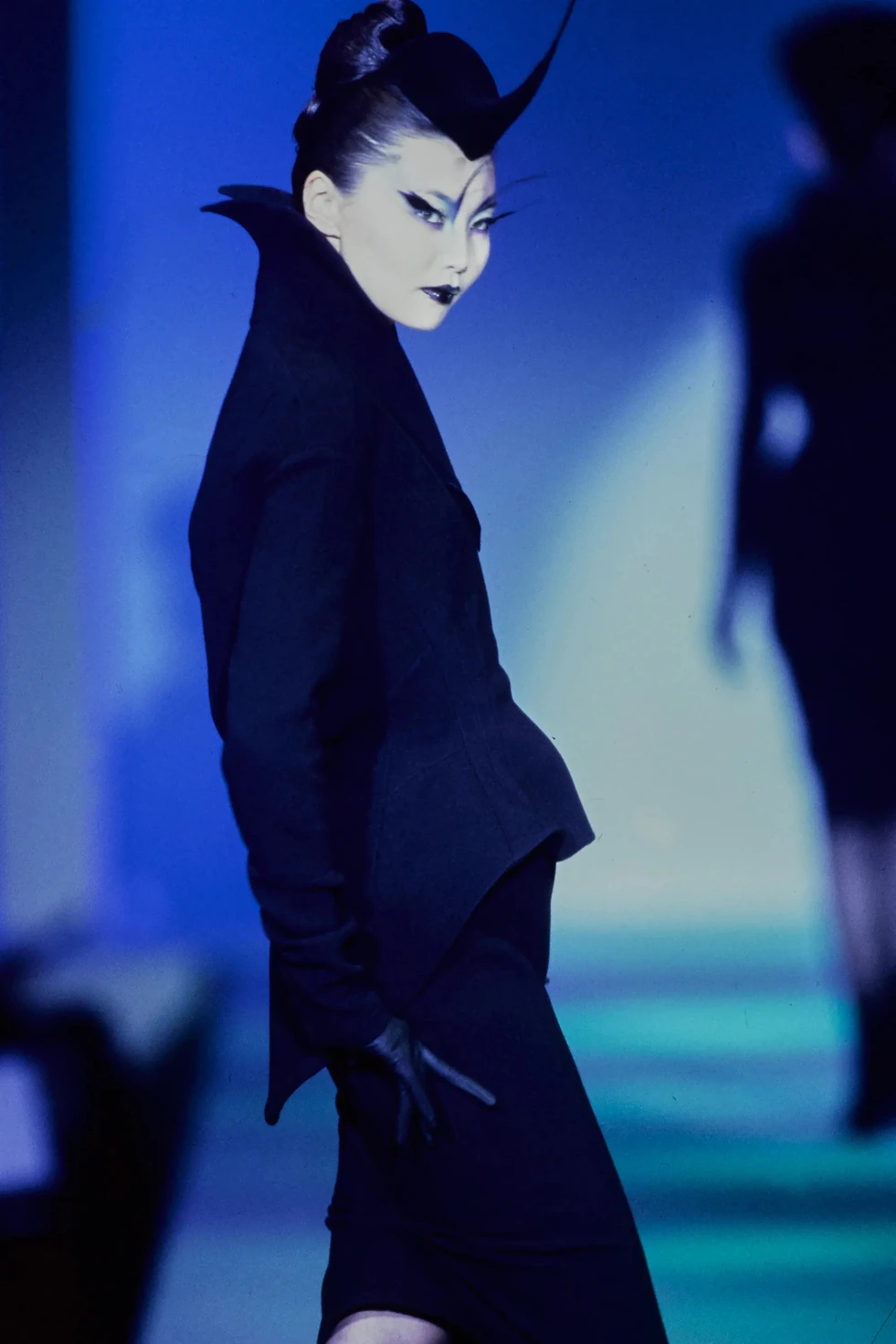
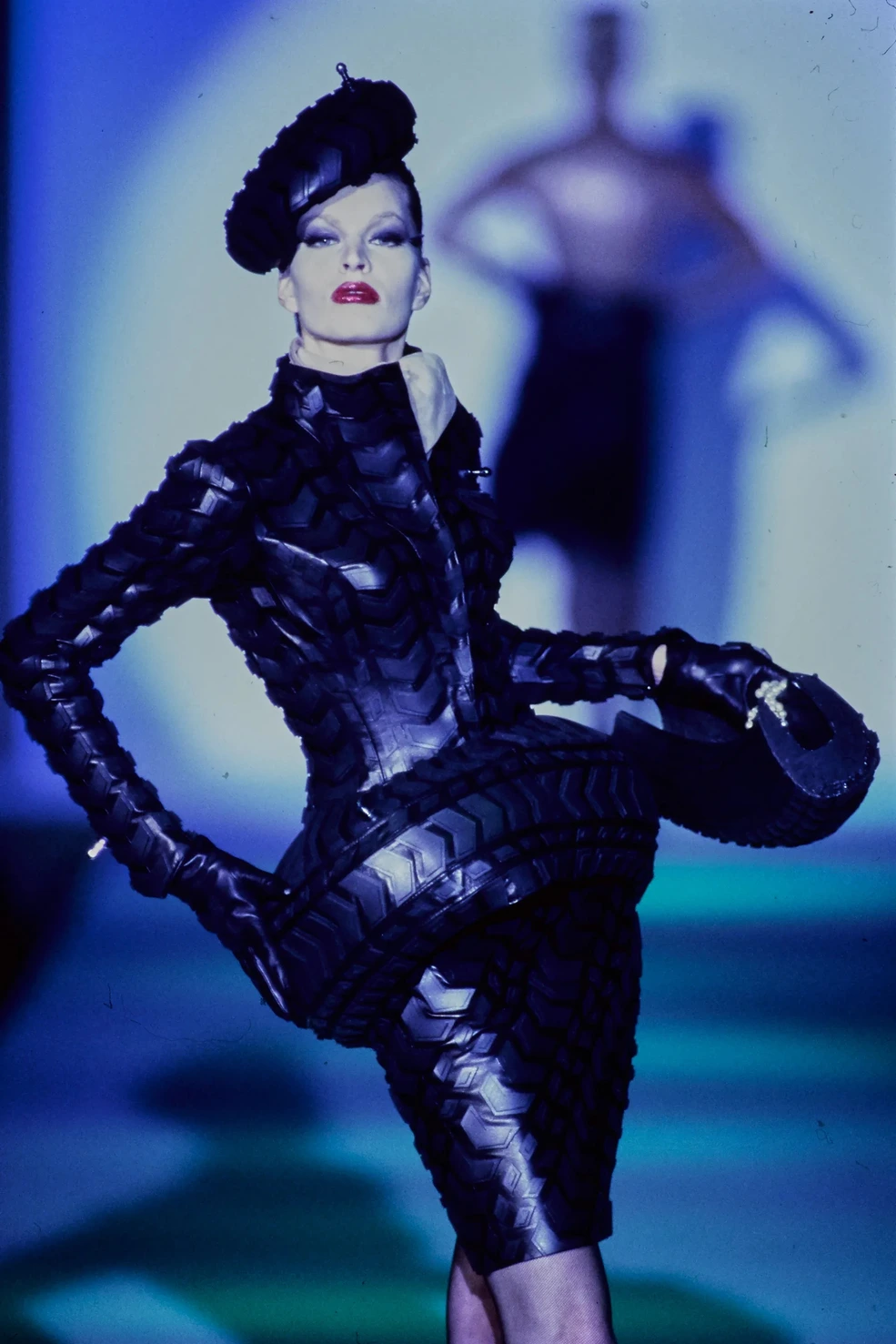

In 1995 and 1997 Jean Paul Gaultier was proposed to take the artistic direction of Givenchy and Christian Dior. Although he declined both offers, it motivated him to pursue his childhood dream to become a high fashion designer.
The first haute couture collection of the ‘Enfant Terrible’ was surprisingly classical. It was presented in complete silence according to the tradition, interrupted only by the voice of the journalist who commented each passage.

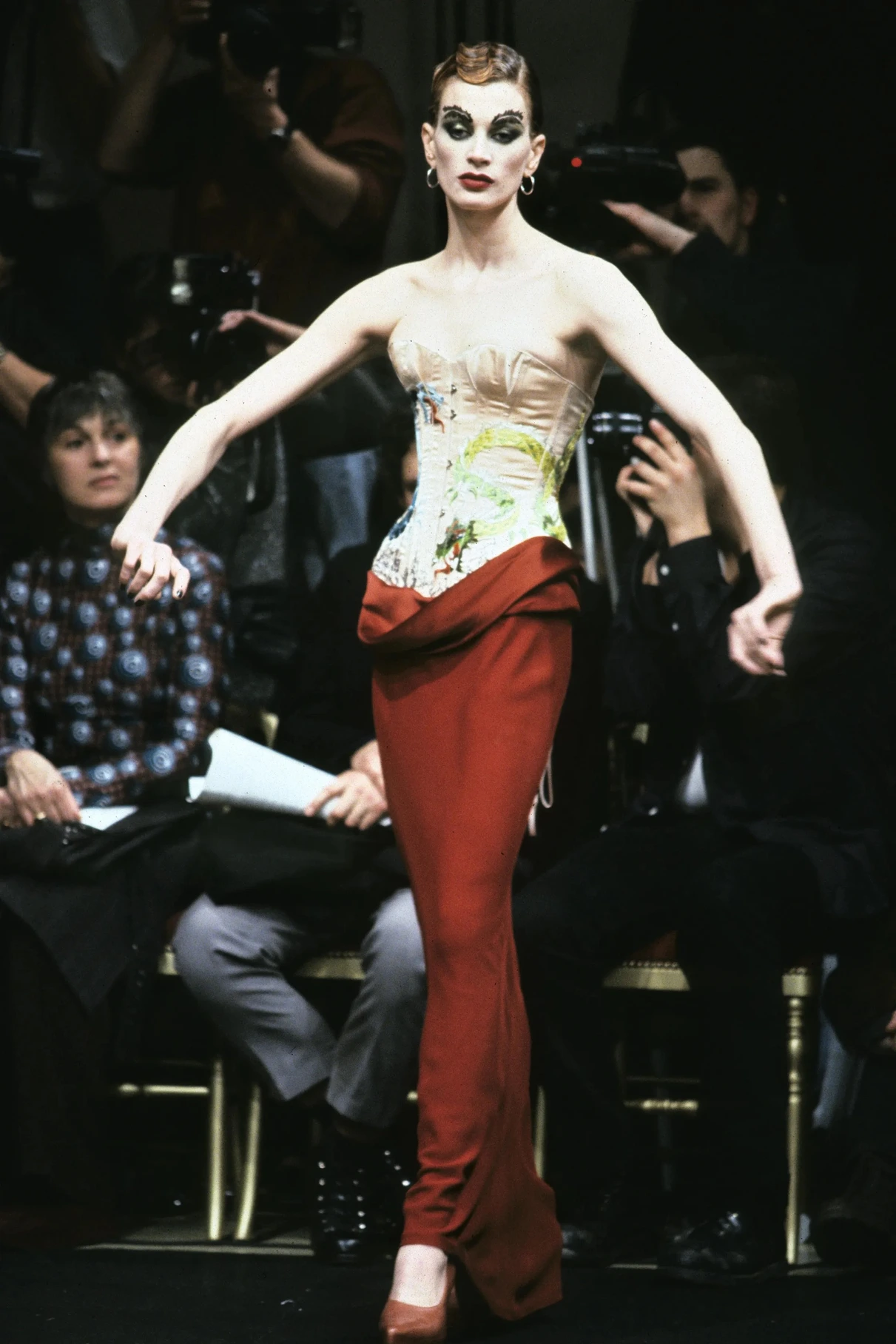
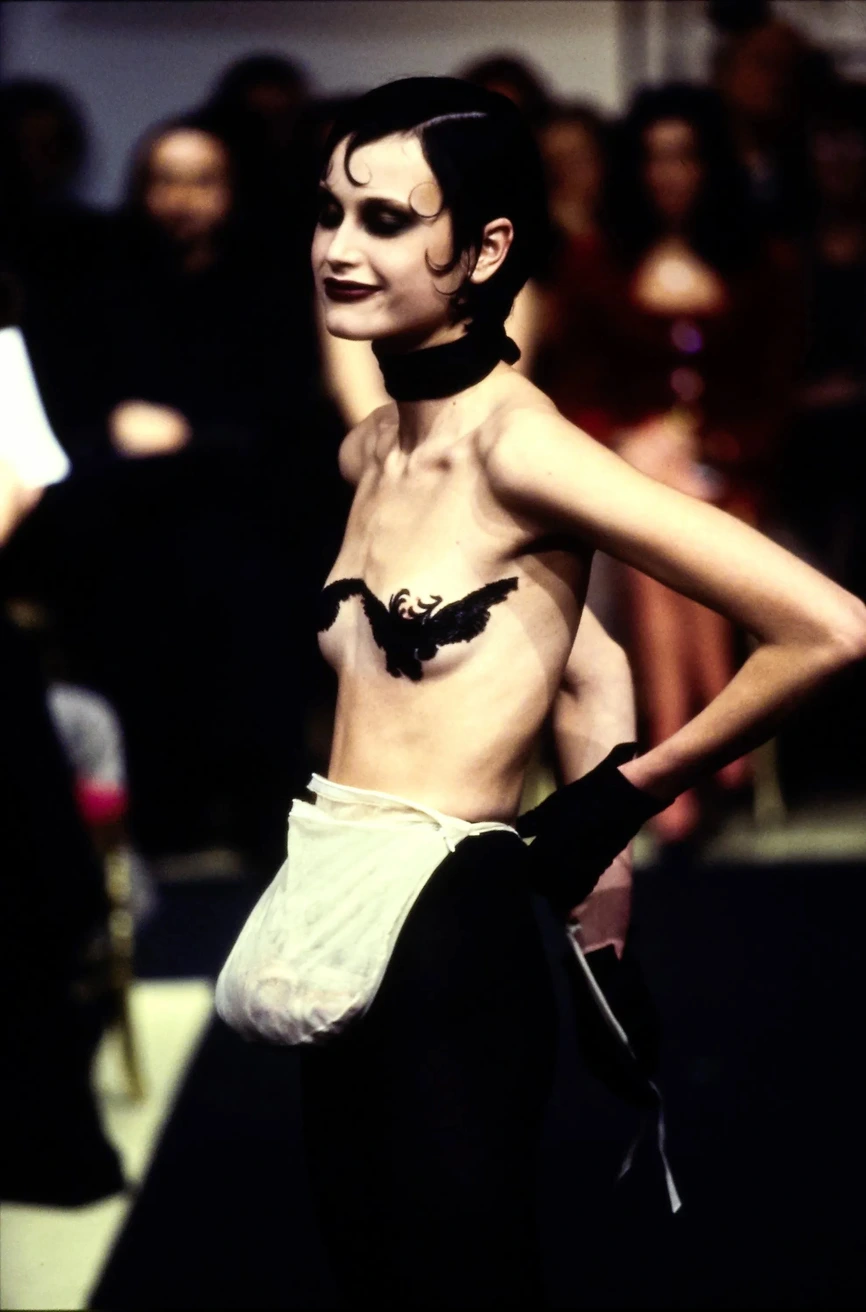
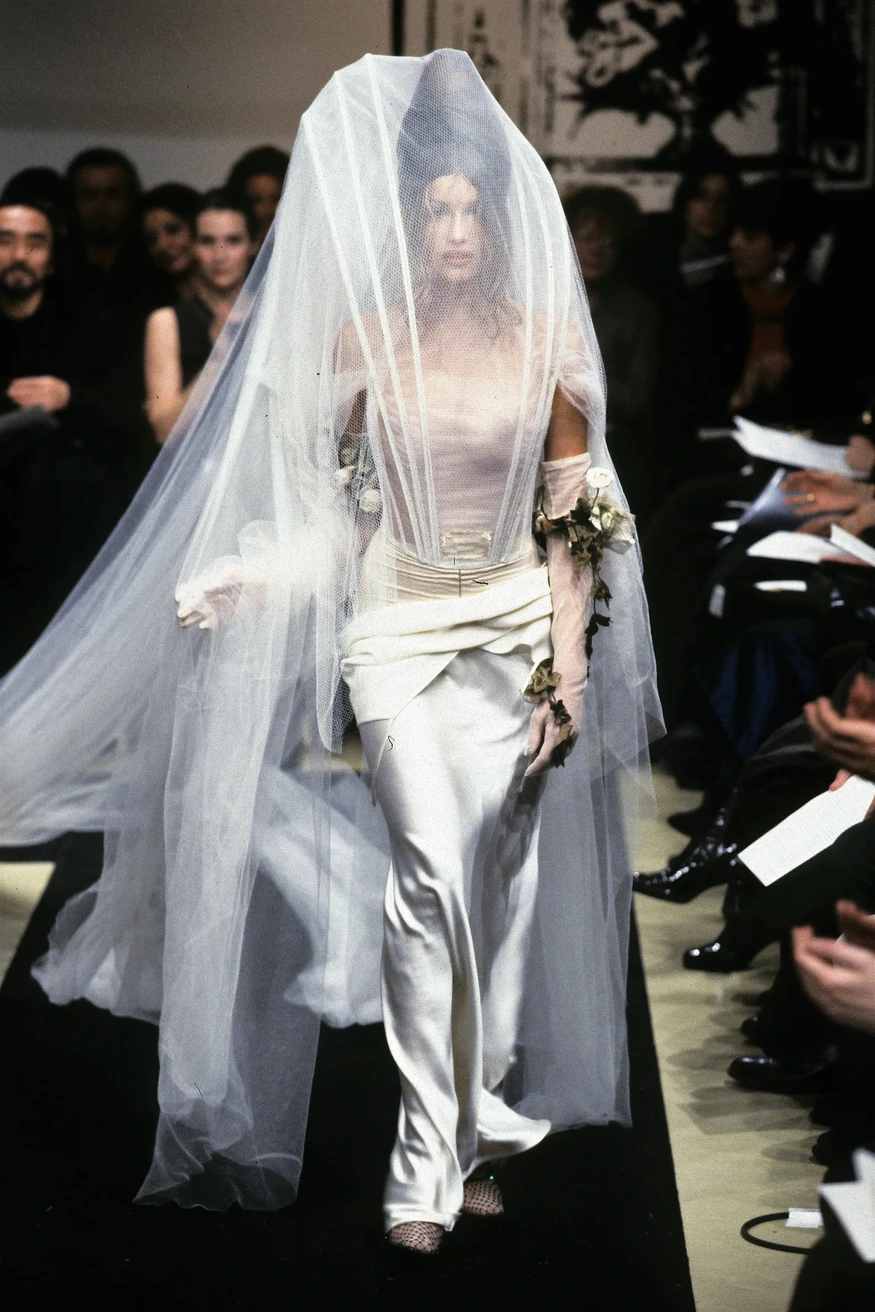
The same year ‘The Fifth Element’, science fiction movie directed by Luc Besson was out. Featuring Bruce Wills, Gary Oldman, Milla Jovovich and Chris Tucker, this film entered in the history of cinema but also became a reference in the matter of costumes. Costumes created by Jean Paul Gaultier! The designer attached great importance to the actors he was to dress and considered their personality and way of moving when inventing their looks.
They are some creatives who can not be ‘classified’ whatsoever. Rei Kawakubo one of that kind. Sixteen years after her debut in Paris this Japanese designer divided the critics evoking either admiration or discomfort. Explaining her vision in 1998 Kawakubo said: “I maintain that seeing experimental clothing constitutes for everyone as sort of mental liberation”. In her spring-summer 1997 collection she questioned the garment as much as the body, challenging the feminine canons of beauty that predominated since antiquity.
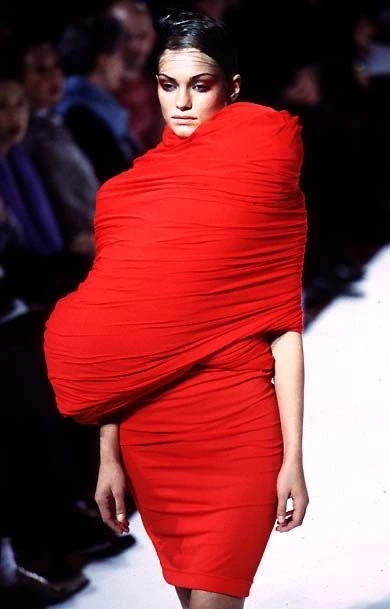
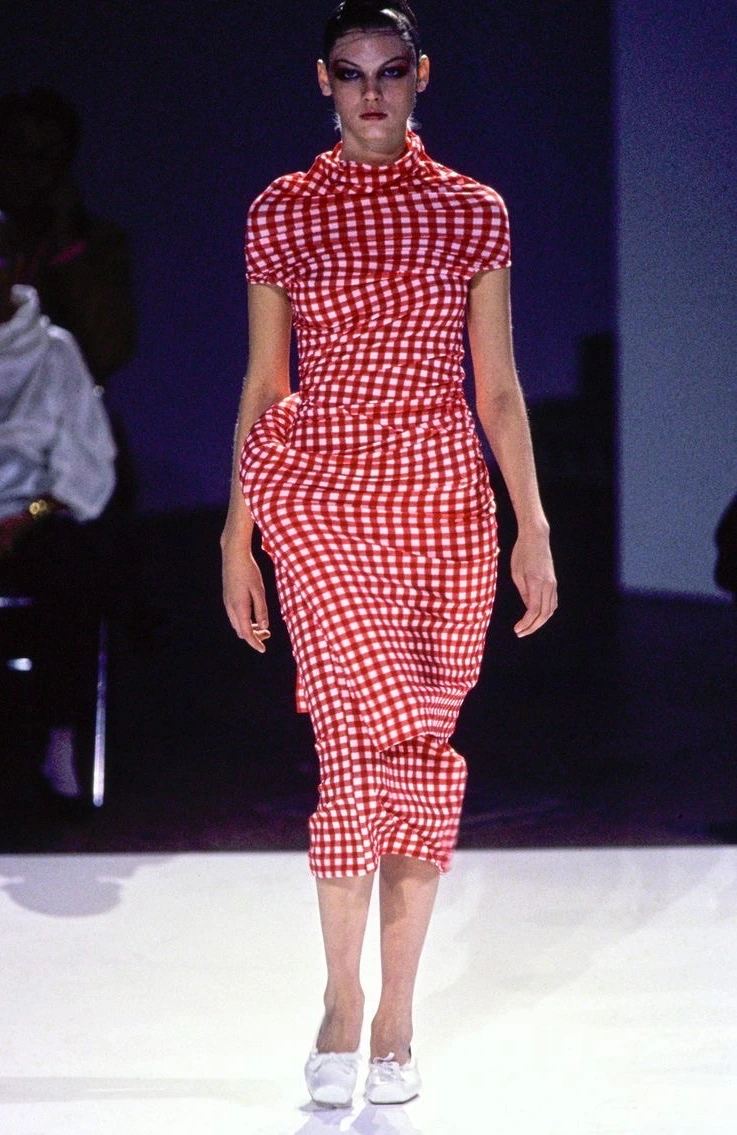

Even if we can not cover all fashion-related events of that exceptional year in our short article (as it would definitely exceed its size), the present note would not be complete without mentioning a tragidy, which influenced the world not only in 1997 but far beyond. On 22 July 1997 Diana Spencer, Princess of Wales and the wife of Prince Charles, heir to the throne of England, attended the funeral of Gianni Versace. Thirty-nine days later, the car she sharing with Dodi Al-Fayed hit a column of the Pont d’Alma tunnel in Paris killing the couple. Lady D’s sudden death produced a shockwaves around the world, including fashion industry.
During 1990s, she has become not just a queen of hearts but an international fashion icon admired by her style and grace. In December 1996 she was wearing the very first dress created by John Galliano for Christian Dior for Met Gala.
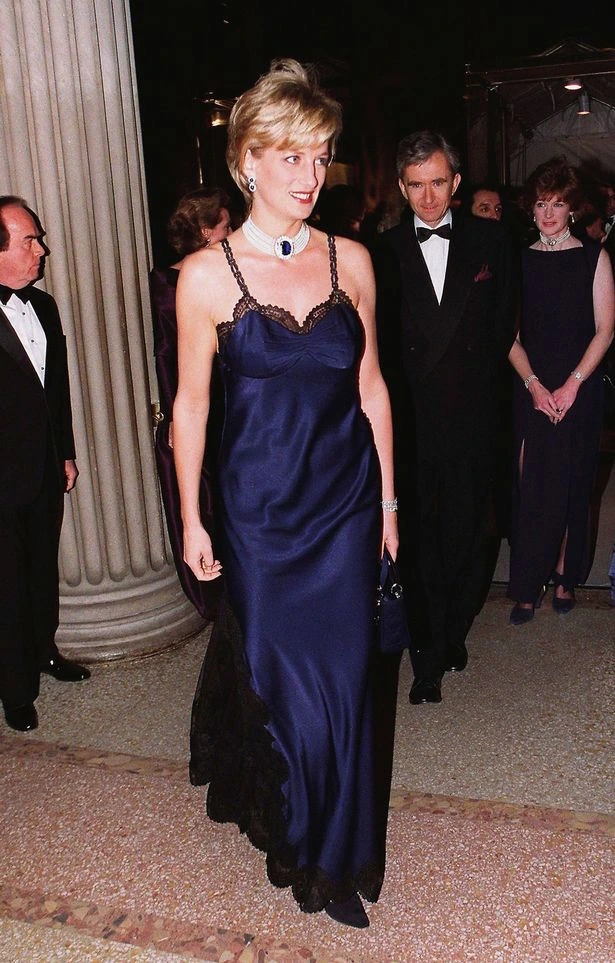
COMMENT
LEAVE A COMMENT
Actually, this article could
be in your email
Featured materials from FOXYLAB MAGAZINE
are available in our newsletters.
Subscribe and get a dose of inspiration!
SHARE THE ARTICLE

more articles
International fashion icon and symbol of Parisian style, Ines de la Fressange is one of the most famous women in France.
A whole world on the tip of a pencil. The story of an artist who proved that true art has no limits and that it is never too late to start all over again.
Vitalie Burcovschi’s digital art captivates the soul and transports the viewer to a realm of boundless imagination and emotion. In his art, he creates…
Anastasia Pilepchuk is a Berlin-based artist with Buryat roots. She creates masks and face jewellery inspired by the nature and the culture of her beautiful region.

want to share your story
with the world?
We're open to collaborating with creative and talented individuals like you. Leave us your email below, and let's connect for interviews, articles, and more.
don’t miss!
New drop
foxylab ny x Edward Acosta
New drop FXLB x Edward Acosta
A thin edge of seduction and the consumerism fetish is thoroughly blurred in Acosta’s art in the use of both light, and dark tones. Bold lines serve as a fashionable juxtaposition of a peaceful dream-like state and a vivid color, representing action and presence in the moment.
International fashion icon and symbol of Parisian style, Ines de la Fressange is one of the most famous women in France.
A whole world on the tip of a pencil. The story of an artist who proved that true art has no limits and that it is never too late to start all over again.
Vitalie Burcovschi’s digital art captivates the soul and transports the viewer to a realm of boundless imagination and emotion. In his art, he creates…
Anastasia Pilepchuk is a Berlin-based artist with Buryat roots. She creates masks and face jewellery inspired by the nature and the culture of her beautiful region.



